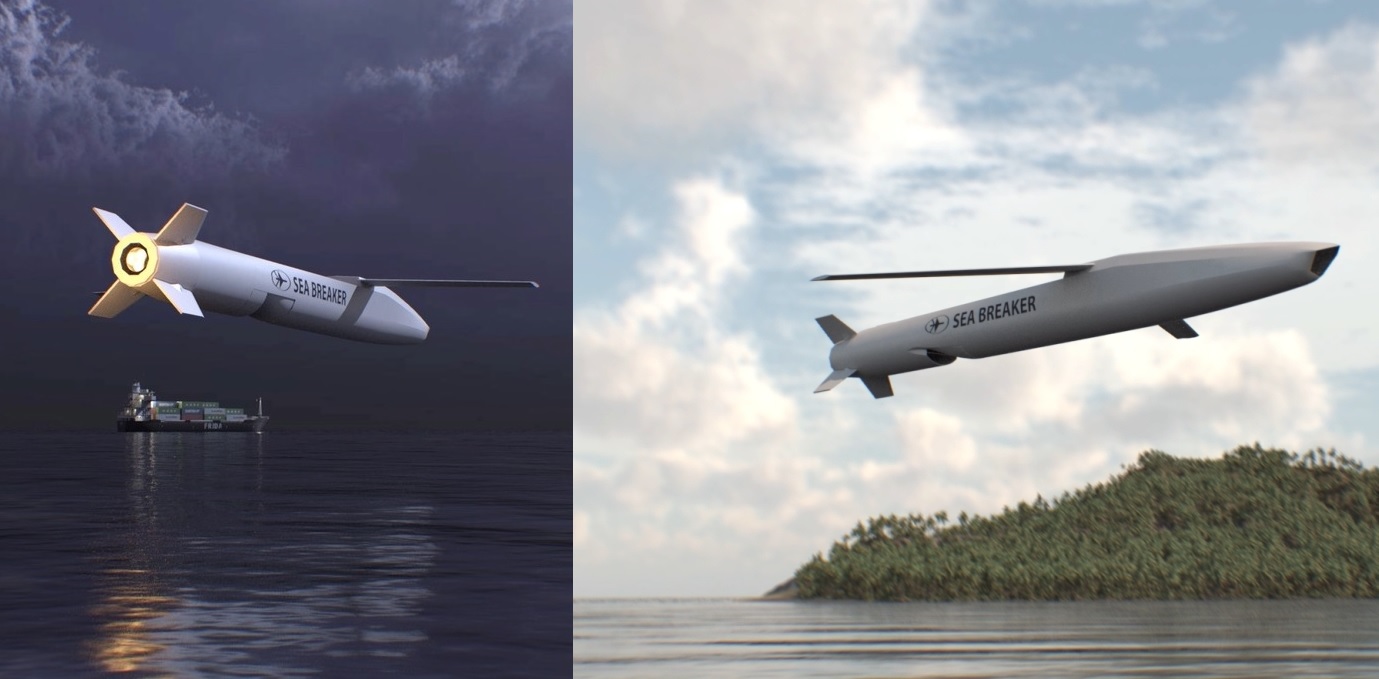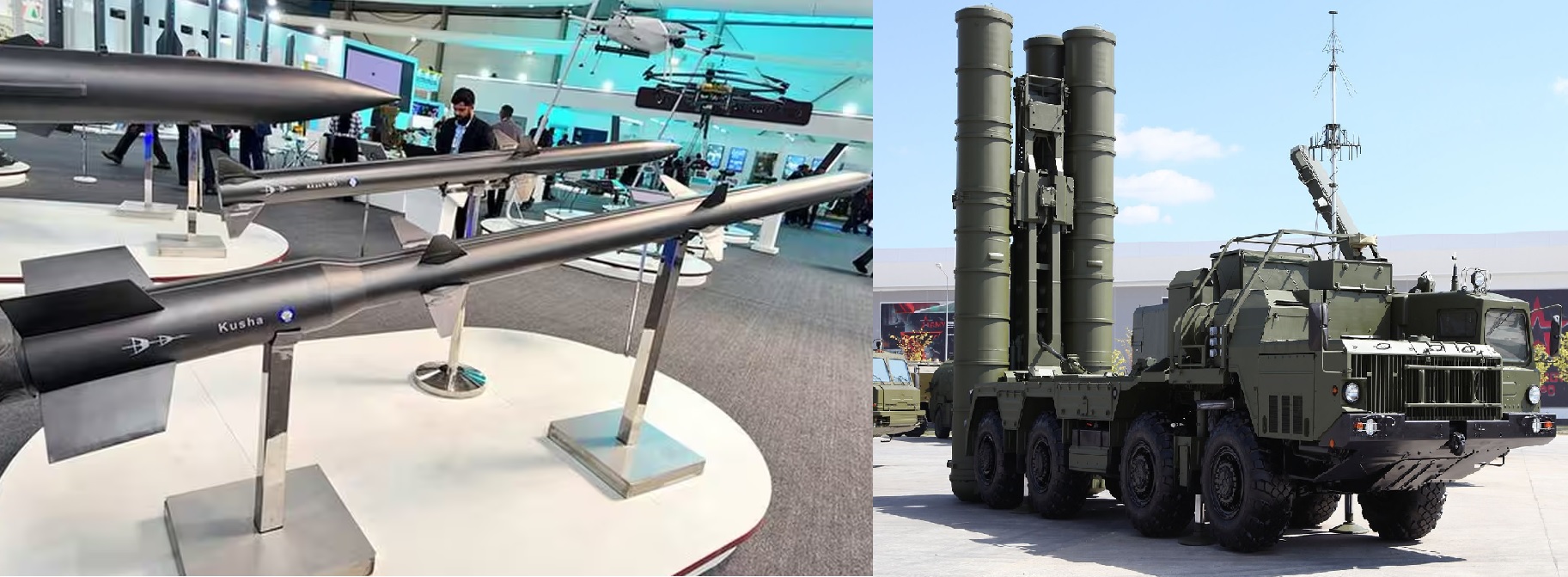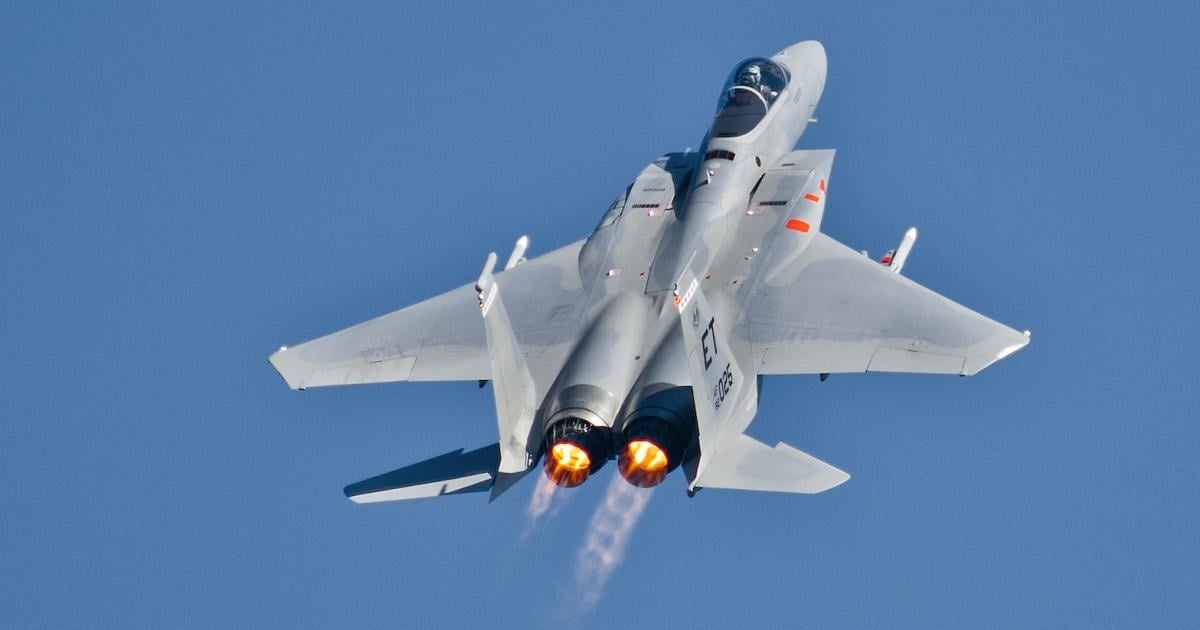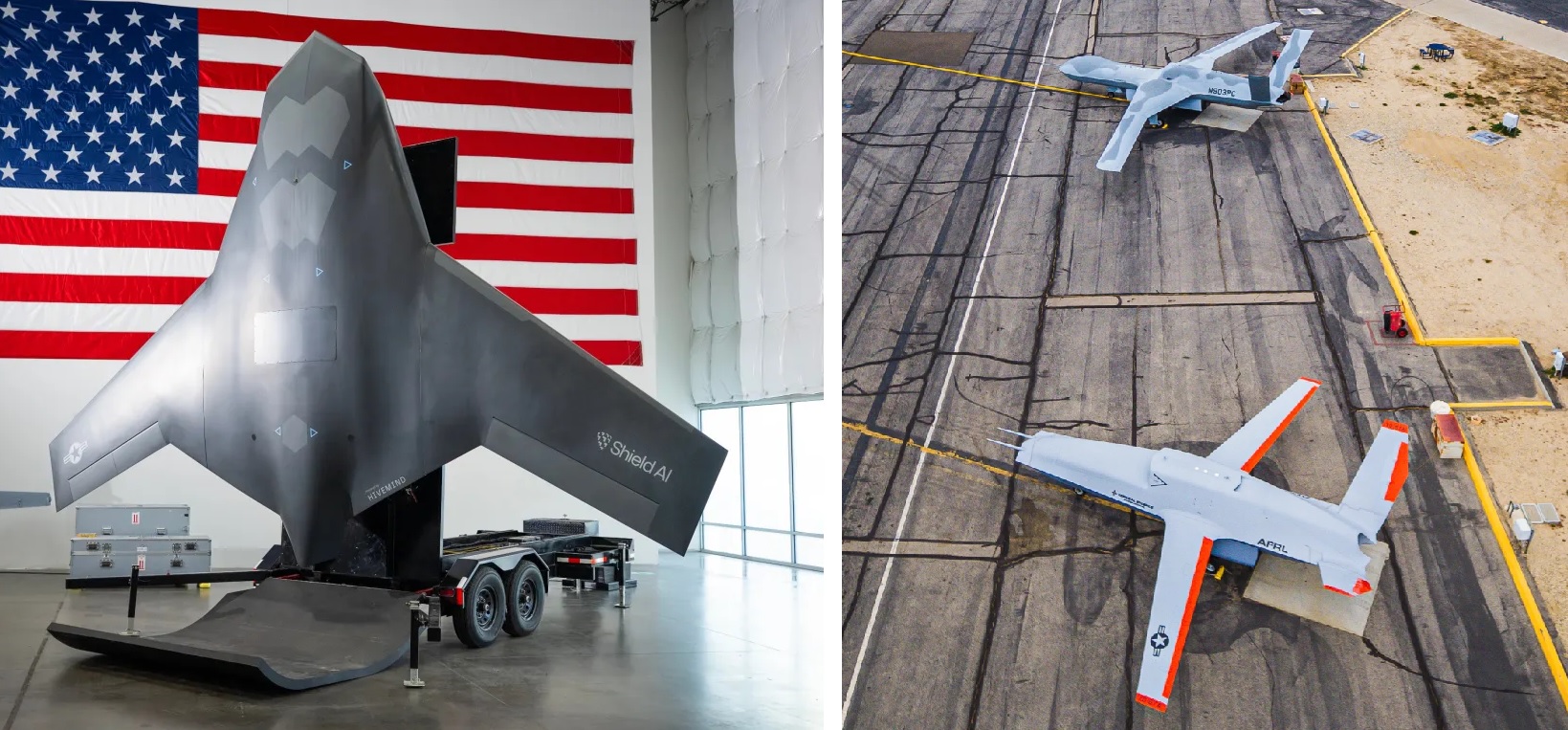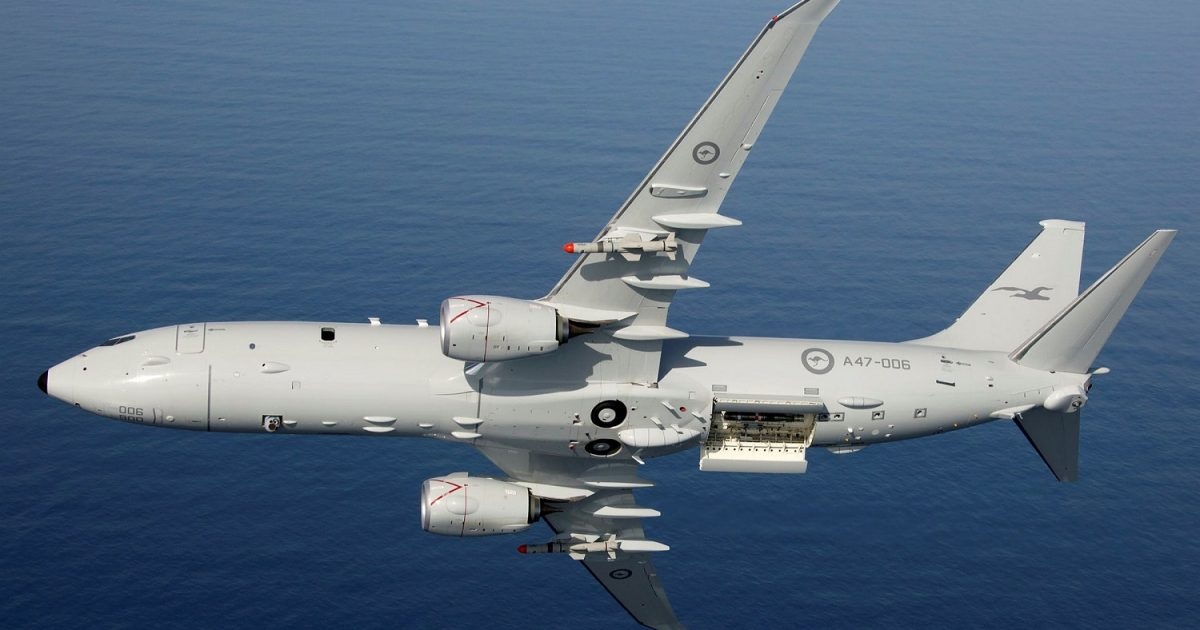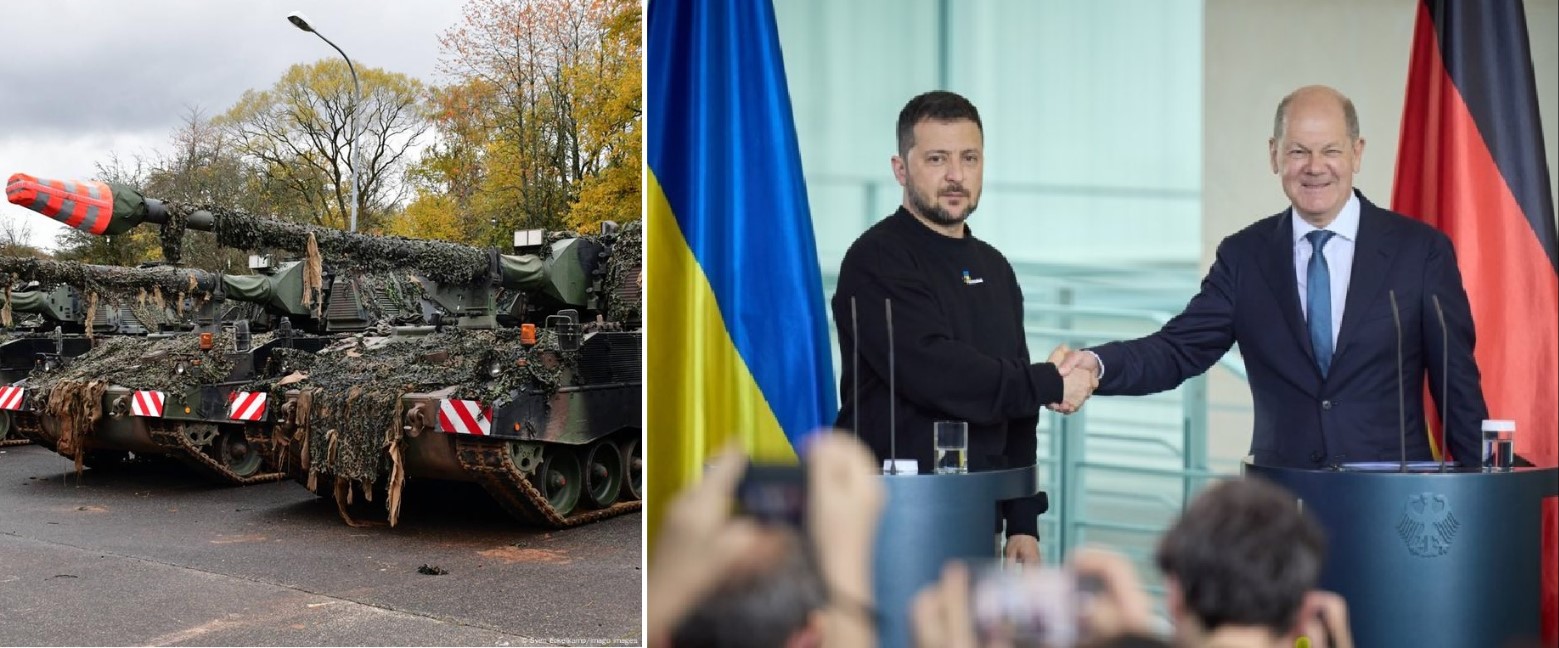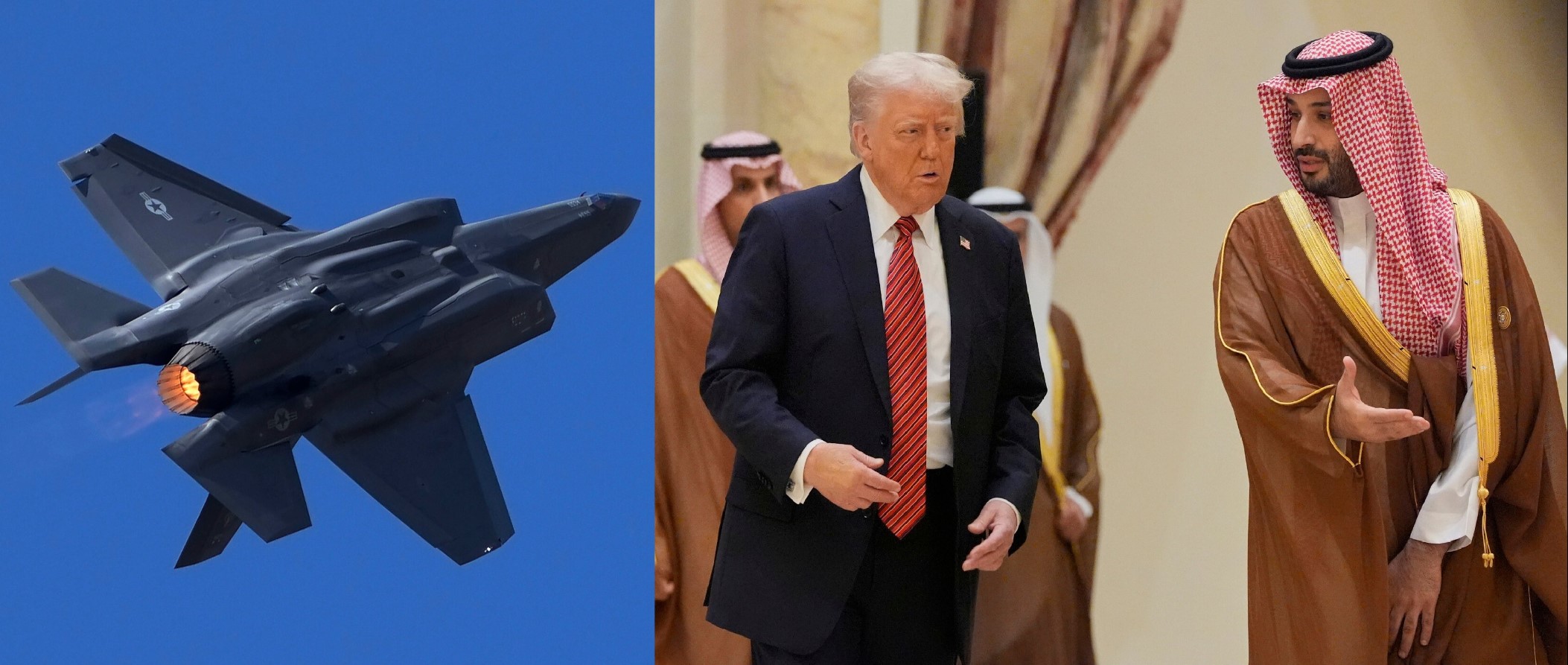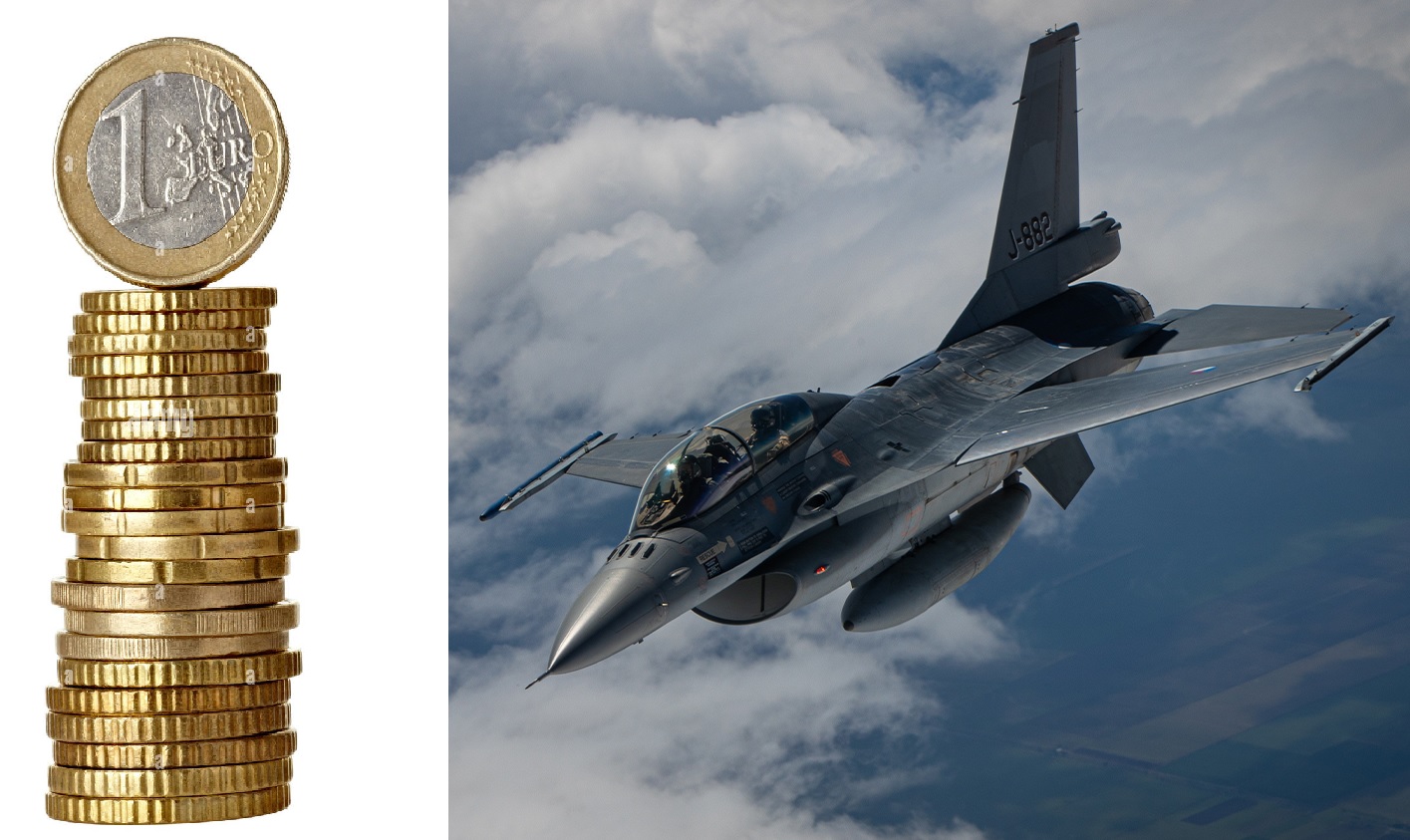World
Azerbaijan has inducted Israel’s Sea Breaker precision-guided cruise missile into its armed forces, strengthening the country’s coastal and maritime defense capability. The system, developed by Rafael Advanced Defense Systems, is designed to engage both sea and land targets with high accuracy. The Sea Breaker is a long-range, precision cruise missile that carries a 113-kilogram warhead and can strike targets at distances of up to 300 kilometers. It uses a combination of inertial navigation, satellite guidance (GPS), and imaging infrared (IIR) systems to locate and track targets. The missile can operate in complex environments, including areas with limited GPS signals, and follows a low-altitude flight path to reduce detection. While the exact details of the Azerbaijan–Israel defense agreement have not been made public, reports indicate that discussions and initial arrangements began after the missile’s international debut in 2021. The delivery of Sea Breaker systems to Azerbaijan fits within the broader defense cooperation framework between the two countries, which has included earlier acquisitions such as the Barak MX air defense system, LORA tactical missile, and Spike anti-tank missile family. The Sea Breaker can be launched from naval platforms, coastal batteries, or mobile land-based vehicles, allowing it to be used by different branches of Azerbaijan’s military. Its compact design enables deployment on smaller vessels and mobile launch trucks. A secure data-link also allows operators to update target information during flight if required. Military sources familiar with the program note that the Sea Breaker gives Azerbaijan the ability to monitor and defend its coastal areas and offshore installations along the Caspian Sea. The missile’s range allows it to cover significant parts of the region and respond to potential maritime threats or hostile movements. Its land-attack capability can also support precision strikes on fixed infrastructure such as command posts or radar sites if needed. Compared to older anti-ship systems, the Sea Breaker offers improved precision, better electronic resistance, and flexible deployment options. Its design focuses on accuracy and survivability rather than size or payload, making it suitable for modern coastal defense networks. The induction of the Sea Breaker also comes at a time when regional navies in the Caspian area—such as those of Iran, Russia, and Turkmenistan—are upgrading their own missile and surveillance systems, increasing competition and operational complexity in the region. Azerbaijan’s adoption of a modern, long-range missile adds a new factor to the regional security equation, especially in Caspian Sea monitoring and maritime control zones, where overlapping interests occasionally create tensions. Azerbaijan’s decision to acquire the system reflects its effort to modernize its missile and coastal defense capabilities while maintaining long-term defense cooperation with Israel. The two countries have worked together on a range of defense technologies, and the Sea Breaker marks another step in that partnership. Neither Rafael nor Azerbaijani officials have disclosed the number of missiles supplied or the delivery schedule, but the system is expected to enter operational service in phases as crews complete training and integration work. With its introduction, the Sea Breaker adds a long-range, precision-strike component to Azerbaijan’s defense forces, supporting maritime security and deterrence in a region where multiple countries are enhancing their naval and missile systems.
Read More → Posted on 2025-11-06 15:35:23World
A new wave of tension is building in the Horn of Africa as Ethiopia accuses Eritrea of preparing for war, while Asmara rejects the allegations and accuses its larger neighbor of provoking instability. The renewed hostility, rooted in old territorial grievances and Ethiopia’s growing desire for access to the Red Sea, has sparked regional concern that another conflict could erupt between the two nations after two decades of uneasy peace. For months, Ethiopian Prime Minister Abiy Ahmed has been openly pressing for sea access for his landlocked country. Ethiopia, which lost its coastline when Eritrea gained independence in 1993, has since depended on Djibouti for nearly 95% of its maritime trade. But the rising cost of dependence, combined with the strategic value of the Red Sea in global trade and regional security, has made Abiy’s rhetoric increasingly assertive. In an address to the Ethiopian parliament on October 28, Abiy stated he was “a million percent sure that Ethiopia will not remain landlocked whether anyone likes it or not.” He emphasized that Ethiopia seeks a “peaceful solution” and has called for international mediation, particularly from the United States and Europe, to broker a deal that could allow Ethiopia access to the sea through cooperation, not conflict. However, Eritrea’s government views these remarks with alarm. Officials in Asmara, through the Ministry of Information, accused Abiy of “fomenting dangerous conflicts” and of attempting to justify potential military action. Eritrea, a country of just over 3 million people, suspects that Addis Ababa is eyeing its southern Assab port, a strategically located facility that once served as Ethiopia’s primary maritime outlet before independence. Regional experts say Abiy’s statements appear to be laying political and moral groundwork for stronger action if diplomacy fails. “He is gradually building up an argument which can justify a more concrete military action, portraying Eritrea as a hostile neighbour,” said Kjetil Tronvoll, professor at Oslo New University College and an expert on Horn of Africa politics. Historical Roots of the Dispute The deep-seated mistrust between Ethiopia and Eritrea stems from their bloody border war that lasted from 1998 to 2000, killing an estimated 70,000 people. The conflict erupted after disagreements over the small border town of Badme, and though the Algiers Peace Agreement formally ended the war, resentment persisted for years. Relations appeared to thaw in 2018, when Abiy Ahmed and Eritrean President Isaias Afwerki signed a peace declaration that earned Abiy the Nobel Peace Prize a year later. However, the optimism soon faded. Eritrea’s involvement in the Tigray conflict (2020–2022), in which its troops fought alongside Ethiopian federal forces but later clashed with regional militias, revived tensions. The scars of the Tigray war remain fresh. In early October 2025, Ethiopia sent a letter to the UN Secretary-General, accusing Eritrea of “actively preparing for war” and of working with the Tigray regional government to “destabilize and fragment” Ethiopia. Eritrea dismissed the allegations as a “deceitful charade”, but analysts note that Asmara maintains informal links with the Tigray People’s Liberation Front (TPLF) and other anti-government groups. Why Tensions Are Rising Again Ethiopia’s renewed maritime ambitions are central to this growing friction. For Abiy’s government, access to the Red Sea is not only a matter of trade but of national security and sovereignty. Ethiopia’s economy, one of Africa’s largest, relies heavily on imports and exports that pass through Djibouti, costing the country hundreds of millions of dollars annually in port fees. The Assab port in Eritrea offers a geographically shorter and potentially cheaper route. But any move toward it — even diplomatic — touches a raw nerve in Asmara, which views Ethiopian interest as a threat to its sovereignty. Eritrea’s response has been to strengthen regional ties, notably with Egypt, a long-time rival of Ethiopia over Nile River water rights. President Isaias Afwerki visited Cairo recently, where he met Egyptian President Abdel Fattah al-Sisi, who reaffirmed Egypt’s “commitment to supporting Eritrea’s sovereignty and territorial integrity.” Analysts see this growing Eritrea–Egypt alignment as a counterweight to Addis Ababa, especially amid Egypt’s ongoing dispute with Ethiopia over the Grand Ethiopian Renaissance Dam (GERD) on the Nile. A Region on Edge Satellite imagery earlier this year showed Ethiopian and Eritrean troops massing along parts of the border, though those deployments appeared temporary. Western intelligence sources note that there is no confirmed evidence of an imminent conflict, but they acknowledge that tensions are rising sharply. “The atmosphere is increasingly fragile,” said Alex Vines of the European Council on Foreign Relations. “The Egypt factor, the unresolved Tigray issue, and Ethiopia’s renewed push for Red Sea access have all combined to create a volatile situation.” Both governments have remained silent on the latest accusations. But observers warn that the situation could deteriorate quickly if diplomatic channels fail. For Ethiopia, with its population of over 130 million, the lack of a coastline is seen as an economic and strategic handicap. For Eritrea, defending its sovereignty against a larger neighbor is a matter of survival and national identity. As Abiy Ahmed calls for “peaceful mediation,” and Eritrea warns against “provocation,” the Horn of Africa once again finds itself at a familiar crossroads — where economic ambition, historical grievances, and regional rivalries intersect. Whether the path forward leads to cooperation or confrontation will depend on whether both sides can turn their competing visions of the Red Sea into a shared opportunity, rather than another flashpoint of war.
Read More → Posted on 2025-11-06 15:25:14Secrets/Mystery
In a development that has sparked intense discussion across the scientific community, NASA has confirmed unusual behavior in the interstellar object 3I/Atlas, currently passing through our Solar System. The object, officially designated as 3I/Atlas (C/2025 N1), appears to possess a tail that bends toward the Sun — a phenomenon that contradicts everything astronomers typically observe in comets. The confirmation came after U.S. Congresswoman Anna Paulina Luna stated that she had personally spoken with NASA officials who verified the data. According to Luna, the agency has already captured high-resolution images of the object, but they remain temporarily withheld due to the ongoing U.S. government shutdown. Once the images are released, they could provide the first clear look at a phenomenon that may redefine what scientists classify as a natural celestial object. A Third Visitor from Beyond the Solar System 3I/Atlas is the third confirmed interstellar object ever detected, following ʻOumuamua (1I/2017) and 2I/Borisov (2019). It was first spotted on July 1, 2025, by the Asteroid Terrestrial-impact Last Alert System (ATLAS) telescope in Chile. Initial orbital calculations revealed that 3I/Atlas is on a hyperbolic trajectory, indicating that it entered our Solar System from interstellar space and will never return once it departs. According to NASA’s Center for Near-Earth Object Studies (CNEOS), the object’s perihelion (closest approach to the Sun) occurred in late October 2025, at a distance of roughly 1.4 astronomical units — about the distance between Mars and the Sun. It will pass Earth at a safe distance of about 1.8 AU, far beyond the orbit of Mars. The Tail That Defies Expectation Under normal conditions, a comet’s tail always points away from the Sun, driven by solar radiation pressure and the solar wind that pushes gas and dust outward. In the case of 3I/Atlas, however, NASA scientists have observed a distinct curvature in the tail, appearing to bend toward the Sun — an orientation that defies established models of cometary physics. Preliminary hypotheses suggest several possible explanations. One theory proposes that the object’s material composition or outgassing jets could be causing localized thrust effects, bending the tail inward. Another possibility is that interstellar dust properties or charged particle interactions unique to this object are influencing its tail’s shape. If confirmed through imaging and spectroscopy, this would mark the first recorded instance of a comet or interstellar body exhibiting a sunward-pointing tail, forcing astronomers to reassess existing models of dust and plasma dynamics in near-solar environments. Locked Data and Anticipation According to Congresswoman Luna, NASA has already captured high-resolution images of 3I/Atlas through its deep-space observation network, including instruments linked to the James Webb Space Telescope and Hubble. However, these images are reportedly unreleased pending the resumption of normal agency operations after the temporary government shutdown. In the meantime, astronomers worldwide continue to track 3I/Atlas in real time, sharing live positional and brightness data. Independent observatories have confirmed the presence of a long, asymmetric tail and a brightening coma, indicating increasing activity as the object interacts with solar radiation. Why It Matters The discovery of 3I/Atlas offers a rare glimpse into material that formed around another star, possibly billions of years ago. Studying its composition could provide insight into how other planetary systems evolve and how interstellar dust behaves under solar influence. If the abnormal tail direction is verified, it could also challenge current assumptions about what defines a natural cometary object. Past interstellar visitors — such as ʻOumuamua — already sparked debate due to their unexplained accelerations and non-typical structures. 3I/Atlas’s unexpected behavior may reopen that discussion, this time with more extensive observational data. Ongoing Investigation NASA, the European Space Agency (ESA), and several independent observatories are now coordinating to gather multi-wavelength data on the object. Radar, optical, and infrared observations are expected to clarify whether the tail’s “sunward bend” is a physical anomaly or a geometric effect caused by our viewing angle from Earth. While public excitement grows, scientists remain cautious. As Dr. Thomas Zurbuchen, a former NASA associate administrator, noted in a recent statement, “Interstellar objects challenge our understanding because they don’t follow our Solar System’s rules. What looks strange at first often turns out to be nature teaching us something new.” A Cosmic Mystery in Progress Whether 3I/Atlas turns out to be a rarely behaving comet or something more exotic, it is already reshaping how researchers approach the study of interstellar bodies. The data expected to be released after the government shutdown could offer definitive proof of the tail’s direction and composition. Until then, telescopes around the world remain fixed on this mysterious traveler from beyond our Solar System — an object that continues to remind us how little we truly know about the universe beyond our cosmic neighborhood. 3I/Atlas isn’t just another comet — it’s a test of how far our understanding of “natural” really goes.
Read More → Posted on 2025-11-06 15:17:13World
China has unveiled the world’s first thorium-powered cargo vessel, marking a significant milestone in nuclear maritime engineering and energy innovation. According to the South China Morning Post, the newly developed vessel is powered by a 200 MW thorium molten salt reactor (TMSR) and is capable of carrying up to 14,000 standard shipping containers, making it one of the largest and most advanced nuclear-powered cargo ships ever built. The announcement highlights China’s push to apply thorium-based nuclear technology beyond land-based reactors, extending it into the commercial shipping sector — a move that could transform how long-haul maritime transport operates. The vessel’s reactor uses thorium-232, a fertile element that breeds uranium-233, the actual fissile material, through a neutron absorption process. Unlike traditional uranium or pressurized-water reactors, this design operates using molten fluoride salts as both fuel and coolant, allowing the system to function at low pressure but high temperature, increasing safety and thermal efficiency. A New Kind of Power at Sea At the heart of the ship lies the molten salt reactor, which generates around 200 megawatts of thermal energy. This output is converted through a supercritical CO₂ Brayton cycle, achieving thermal-to-electric conversion efficiency of nearly 45–50 percent — far higher than conventional marine engines. The system also eliminates the need for vast volumes of high-pressure steam and cooling water, making it more compact and theoretically safer for maritime use. The ship’s design includes advanced shielding and containment systems, compact reactor control rooms, and redundant safety loops. It will also feature secondary diesel backup generators providing around 10 MW of auxiliary power for emergency operations or port maneuvering. Engineering Challenges Adapting thorium molten salt reactor technology — originally designed for stationary land-based power generation — to a mobile, compact maritime platform was one of the most complex tasks faced by Chinese engineers. A land-based thorium reactor typically operates in a large, static containment facility with extensive cooling and fuel handling infrastructure. Miniaturizing that into a reactor small enough to fit within a ship’s hull required major breakthroughs in heat exchange systems, corrosion-resistant materials, and modular reactor design. The motion and vibration of the marine environment introduced new engineering problems, as molten salt must circulate smoothly through heat exchangers even when the ship is rolling or pitching at sea. Another challenge lay in thermal management and safety. Thorium reactors operate at higher temperatures (typically 600–700°C), which necessitated the development of nickel-based superalloys capable of withstanding continuous exposure to hot, corrosive salts. China’s materials research institutes reportedly developed new alloy coatings to ensure long-term operation in a marine setting. Moreover, converting the land-based fuel cycle — which includes online reprocessing of thorium fuel and removal of fission products — into a closed, sealed marine module required a rethinking of fuel handling and waste retention. The ship’s design reportedly includes an onboard containment system that stores fission products for years until the ship returns to port for maintenance. From Land to Sea: A Decade of Development The project builds on China’s earlier success with the TMSR-LF1, a 2 MW experimental molten salt reactor completed in Gansu province in 2021. Data from that land-based prototype helped engineers refine salt chemistry, materials handling, and safety systems. Scaling that up to a 200 MW maritime reactor involved a decade of parallel work between China National Nuclear Corporation (CNNC), Shanghai Marine Design and Research Institute, and several academic partners. According to reports, the Chinese Academy of Sciences (CAS) supervised early-stage R&D for the molten salt reactor design, while naval and commercial shipyards collaborated to adapt it to maritime specifications. Strategic and Environmental Impact If successful, the thorium-powered vessel could dramatically reduce global shipping emissions. Current container ships burn tens of thousands of tons of heavy fuel oil annually, contributing heavily to global CO₂ and sulfur emissions. A thorium reactor, in contrast, produces zero greenhouse gases during operation and can run continuously for several years before refueling. China also sees thorium as a strategic resource. The country holds some of the world’s largest thorium reserves, giving it a potential edge in developing non-uranium-based nuclear fuel cycles. Unlike uranium, thorium cannot be directly weaponized, making it more acceptable for peaceful applications. Future Prospects While this development is groundbreaking, it is still at the prototype stage. Before commercial deployment, China must address several remaining issues, including international maritime nuclear regulations, crew safety certification, and insurance frameworks for nuclear-powered civilian ships. Still, the ship’s unveiling demonstrates China’s growing confidence in molten salt reactor technology. If the design performs as expected, it could pave the way for a new generation of long-range, zero-emission cargo vessels capable of sailing for years without refueling — a concept that was once confined to science fiction. By successfully adapting thorium reactor technology from land to sea, China has opened a new chapter in clean maritime propulsion, positioning itself at the forefront of nuclear-powered shipping innovation.
Read More → Posted on 2025-11-06 15:06:23India
India’s Project Kusha, a key next-generation air and missile defense system under the Defence Research and Development Organisation (DRDO), is moving forward with the development of an advanced radar and control architecture. As revealed during a recent interaction involving industry partners, the system will comprise three main radar types and two classes of control and communication centers, creating a unified and layered sensor network capable of tracking threats across long distances. According to technical inputs from sources close to the program, Project Kusha will feature the following radar systems: LRBMR (Long-Range Ballistic Missile Radar) – a surveillance radar designed for early warning and long-range target detection. The LRBMR is expected to have a detection range of around 500–600 km, enabling it to identify ballistic or cruise missile threats well before they enter engagement zones. Operating in the L-band or S-band frequency, this radar will serve as the first layer of the system’s situational awareness network. MFCR (Multifunction Fire Control Radar) – the core of the engagement phase, the MFCR is a high-precision radar with tracking and fire-control capabilities. It is believed to have a range of approximately 250–350 km, depending on the target’s radar cross-section. Similar in concept to those used in the S-400 or the Israeli Arrow system, the MFCR will handle target illumination, guidance updates, and intercept coordination for multiple missiles simultaneously. Mast-Mounted Radar – a mobile, elevated radar designed for tactical flexibility. Mounted on telescopic masts or high mobility vehicles, it provides low-altitude and terrain-following detection of threats such as drones, cruise missiles, and helicopters. The radar’s effective range is expected to be 80–120 km, offering coverage in complex terrain and battlefield environments where long-range sensors may face limitations. Supporting these radar systems will be two types of control and communication centers forming the command backbone of Project Kusha. The first will serve as a primary command-and-control center, integrating radar data, threat prioritization, and interceptor coordination. The second, a mobile relay and communication center, will ensure secure data flow between launchers, sensors, and supporting platforms — essential for a real-time defensive network. Manoj Jain, speaking on behalf of a company involved in radar subsystem development, confirmed that the radar-related prototypes are being developed jointly with LRDE (Electronics and Radar Development Establishment), DRDO’s radar-focused lab. The Defence Research and Development Laboratory (DRDL) continues to lead overall integration and missile development, including propulsion and interceptor testing. Project Kusha is envisioned as India’s long-range multi-layered air defense system, capable of engaging both air-breathing threats and ballistic missiles. It will likely fill the operational space between the indigenous Medium Range Surface-to-Air Missile (MRSAM) and longer-range imported systems like the S-400 Triumf. When operational, the radar suite will provide 360-degree surveillance, high-altitude tracking, and real-time engagement management, all within a fully networked digital command structure. Prototype work on the radar and control systems is currently underway, with integration trials expected in the next testing phase. Industry reports suggest that DRDO aims to achieve full prototype readiness by 2026–2027, following which live tracking and missile-guided trials will commence. Project Kusha’s radar complex will be among the most sophisticated ever developed in India, combining long-range detection, multi-function tracking, and battlefield adaptability. Beyond its immediate defense value, the program will strengthen India’s radar technology base and support future programs like the Ballistic Missile Defence (BMD) Phase-II and hypersonic interception projects. With an integrated radar range extending from over 100 km at the tactical level to nearly 800 km for strategic surveillance, Project Kusha is shaping up to become a central pillar of India’s next-generation air defense shield — one that combines indigenous research, industrial collaboration, and strategic foresight.
Read More → Posted on 2025-11-06 12:47:35India
India has invited Russia to review Hindustan Aeronautics Limited’s (HAL) facilities in Nashik for possible production of the Su-57E stealth fighter aircraft. The invitation marks a continuation of the long-standing defense cooperation between the two countries and comes ahead of Russian President Vladimir Putin’s upcoming visit to India. According to the Russian delegation’s assessment, HAL currently has around 50 percent of the required infrastructure to start limited local production of the aircraft, with further upgrades and investment needed to achieve full capacity. The joint assessment covered HAL’s key facilities in Nashik, Koraput, and Kasaragod. The Nashik plant, which presently assembles Su-30MKI fighters, was found suitable for adaptation to the Su-57E production line with moderate modifications. The Koraput division, responsible for engine production, and Kasaragod, which handles avionics and testing, were also reviewed. The Russian team noted that HAL’s existing facilities are technically sound and could be upgraded with relatively minimal disruption to current operations. Preliminary findings suggest that about 30 to 35 percent of the existing equipment at HAL can be reused, while the remainder would need modern digital manufacturing tools and machinery designed for stealth aircraft. HAL’s internal estimate puts the required investment for modernization and new infrastructure between ₹8,000 and ₹10,000 crore (around USD 1 billion). The upgrades would include new composite fabrication lines, radar-absorbent material (RAM) coating facilities, and testing infrastructure suitable for low-observable aircraft. HAL is preparing a detailed report for submission to the Ministry of Defence (MoD), outlining its current capacity, the necessary improvements, and the estimated costs. The report will also include plans for workforce training and R&D coordination. Once approved, the proposal could move toward a formal partnership framework during the upcoming India-Russia summit. For India, the potential Su-57E production would be a step toward expanding its domestic aerospace manufacturing capabilities. Local assembly would reduce dependency on imports, while creating opportunities for Indian suppliers in precision engineering, composites, and avionics production. The project would likely involve a wide network of Indian companies and could support skill development in advanced aircraft technologies. The Su-57E collaboration is also expected to support India’s ongoing Advanced Medium Combat Aircraft (AMCA) program by giving engineers and technicians practical experience in working with stealth structures, composite airframes, and integrated sensor systems. Both aircraft programs aim to strengthen India’s aerospace industry, though AMCA focuses on a fully indigenous design for future requirements. The Russian assessment has also reaffirmed that India’s industrial base, especially at HAL, has matured enough to take on complex aerospace projects with international collaboration. If the proposal is approved, Nashik could handle both Su-30MKI and Su-57E production lines with phased modernization. This development highlights a practical step in India’s effort to advance its fighter aircraft manufacturing capacity while maintaining strategic cooperation with Russia. The focus remains on industrial readiness, technology transfer, and gradual integration of local expertise rather than rapid expansion. The outcome of the ongoing reviews and the upcoming bilateral discussions will determine how soon the project can move from evaluation to implementation.
Read More → Posted on 2025-11-06 12:33:52World
Cairo’s long-anticipated fighter jet modernization program remains on the table as Egypt and the United States continue negotiations over a potential sale of up to 46 Boeing F-15 Advanced Eagle fighter aircraft. First revealed in 2022, the talks — now reaffirmed by defense intelligence outlet Tactical Report on November 3, 2025 — are still in progress with no finalized contract or delivery timeline. The proposed deal, valued at several billion dollars, could mark a major shift in Egypt’s air power, replacing its canceled Su-35 order and expanding the Egyptian Air Force’s Western-oriented capabilities. A New Chapter After the Su-35 Cancellation Egypt had initially sought to acquire around two dozen Russian-built Su-35 fighters, a deal that reportedly collapsed under Western sanctions and U.S. pressure. Washington’s approval for the F-15 sale, even in principle, was seen as an attempt to offer Cairo an alternative — one compatible with existing U.S. systems and compliant with interoperability standards. The F-15 Advanced Eagle, Boeing’s latest and most capable version of the legendary fighter, brings new radar, avionics, electronic warfare systems, and weapons integration. For Egypt, it represents both a leap in performance and a signal of renewed alignment with U.S. defense policy. Negotiations Still Unsettled Despite positive signals, Cairo and Washington have yet to conclude an agreement. According to Tactical Report, discussions are ongoing, with the deal structure, financing terms, and the aircraft configuration under review. U.S. officials have reportedly approved the sale “in principle,” but export control reviews and regional political considerations continue to delay any formal announcement. Washington remains cautious about transferring high-end combat technologies to non-NATO partners in the Middle East, particularly advanced radar and electronic warfare systems integral to the F-15EX lineage. These concerns have contributed to the drawn-out process, even as Cairo pushes to close the deal. Estimated Cost and Package Value While exact figures have not been released, earlier estimates place the cost of a 36-jet package at around $13.9 billion, based on comparable export cases and support packages. Adjusted for inflation and the potential expansion to 46 aircraft, the total cost could reach $15–18 billion, depending on configuration, support, and weapons integration. This would make it one of Egypt’s largest-ever defense procurements — eclipsing even the Rafale and MiG-29 acquisitions in financial scale. The package is likely to include aircraft, training, maintenance facilities, simulators, spares, and a comprehensive logistics and sustainment network. Egypt’s Current Air Power Landscape The Egyptian Air Force (EAF) remains one of the most capable in Africa and the Arab world, fielding a mix of U.S., French, and Russian platforms. According to open-source data, Egypt currently operates: Around 218 F-16 Fighting Falcons, forming the backbone of its fleet. Approximately 46 MiG-29M/M2 fighters acquired from Russia. 29 Dassault Rafales, with additional aircraft on order. The addition of the F-15 Advanced Eagle would significantly boost the EAF’s long-range strike and air-superiority capability. With a combat range exceeding 1,200 nautical miles, the aircraft could conduct deep-penetration missions across the region — covering the Mediterranean, the Red Sea, and beyond. Strategic and Regional Implications The potential F-15 sale carries significant geopolitical implications. Egypt’s acquisition would make it the second Arab country, after Saudi Arabia and Qatar, to operate modern variants of the F-15. The deal could help Cairo balance power dynamics with regional peers and assert its role as a central security actor in the Middle East. Interestingly, Israel has reportedly raised no objections to Egypt’s request — a sign that the U.S. maintains close coordination with Tel Aviv to ensure the regional “qualitative military edge” remains intact. Washington’s confidence that Egypt remains a strategic partner has made the offer politically viable despite longstanding concerns about human rights and governance. Why the Delay Persists Several factors continue to slow progress. U.S. export law requires rigorous scrutiny for sales involving advanced avionics and electronic warfare technology. Egypt’s mixed record on human rights and governance has also led to congressional hesitation over approving large-scale arms transfers. Additionally, Boeing’s production line is currently saturated with orders for the U.S. Air Force’s F-15EX Eagle II and foreign contracts with Qatar and Saudi Arabia, pushing potential Egyptian deliveries to the latter half of the decade. A Pivotal Decision Ahead If the deal is finalized, Egypt’s Air Force will undergo one of its most significant transformations in decades. The F-15 Advanced Eagle, with its twin engines generating more than 58,000 pounds of thrust and an upgraded AESA radar system, would provide Egypt with unmatched range, payload capacity, and strike precision. For Washington, it would reinforce a critical partnership with a key regional ally while securing another major export success for Boeing. For Cairo, it would mean a decisive step toward modernizing its air fleet and ensuring a long-term technological edge over regional competitors. Egypt’s ongoing negotiations for up to 46 Boeing F-15 Advanced Eagles reflect a clear strategic direction: modernize, diversify, and strengthen within a U.S.-aligned defense framework. While the final contract remains unsigned, the sheer scale of the proposal — estimated between $14–18 billion — underscores Cairo’s determination to expand its air dominance. As talks progress, the outcome will not only reshape Egypt’s military capabilities but also redefine the balance of power across the Middle East’s skies. The Advanced Eagle, if it takes flight under Egyptian colors, will mark a new era for one of the region’s most historic air forces.
Read More → Posted on 2025-11-06 12:22:35World
According to the well-known Russian milblogger Fighterbomber, who maintains extensive connections within the Russian Air Force, an Ilyushin Il-76 cargo plane was shot down in Sudan on November 4 by the Rapid Support Forces (RSF). He claimed the aircraft had been purchased in Kyrgyzstan about six weeks earlier for around $12 million, and that it was being operated by a Russian crew under a commercial contract. Fighterbomber stated that the Il-76 was part of a logistical operation supporting Sudan’s national forces and had been conducting supply flights into contested areas when it was struck by RSF air defenses near El Fasher in the Darfur region. His post described the incident as a “serious loss” and hinted that the Russian crew members were killed. While the blogger’s information often aligns with Russian military developments, no official confirmation has come from Moscow. Open-source information appears to support parts of his account. An Il-76 transport aircraft, previously registered in Kyrgyzstan under EX-76011, was deregistered in January 2024 and later transferred to Sudanese control. The aircraft was operated by a Kyrgyz company called New Way Cargo, which had a history of chartering planes for missions across Africa and the Middle East. After its deregistration, it flew routes between Chad, Libya, and Sudan, indicating involvement in regional logistics or possibly military support operations. Multiple sources in Sudan confirm that the Il-76 was being used by the Sudanese Armed Forces (SAF) to transport supplies, weapons, or humanitarian cargo to troops surrounded by RSF fighters in the west. RSF units, equipped with captured anti-air systems, reportedly fired at the plane as it approached an airstrip under government control. The wreckage, shown in RSF video footage, displayed Russian-language documents and identification papers linking the aircraft to its former Kyrgyz registry. Unverified clips circulated online showed items allegedly belonging to Russian nationals, suggesting that the crew might indeed have been Russian contractors or ex-military pilots. The Kyrgyz aviation authority confirmed that the aircraft had been sold earlier in the year, stating that it “no longer had any link to Kyrgyzstan.” According to market estimates, an Il-76 in similar condition could indeed be worth around $10–12 million, consistent with Fighterbomber’s claim. However, the exact nature of the sale, the buyer’s identity, and whether Russia had any operational control over the aircraft remain uncertain. The Russian government has remained silent on the matter, but the incident fits a broader pattern of Russian logistical involvement in African conflicts. Sudan, long a recipient of Russian defense cooperation, has seen an uptick in covert air operations since the outbreak of its civil war in 2023. Moscow has been seeking to deepen its presence in the region, including the establishment of a naval facility at Port Sudan, while Russian private contractors have maintained ties with both the Sudanese army and rival militias over the years. The shoot-down of the Il-76 underscores the increasingly international nature of the Sudanese conflict. Aircraft sourced from Central Asia, crewed by foreign contractors, and operated in African war zones highlight the blurred lines between state and private military operations. Whether the plane was conducting official resupply missions for Sudan’s army or acting under private Russian arrangements remains unclear. For now, much of the information rests on the testimony of Fighterbomber and scattered documentation from the wreckage. But what is certain is that another Soviet-built cargo aircraft, sold on the global gray market, has become a casualty of Sudan’s civil war—a stark reminder of how Cold War-era hardware and modern mercenary logistics continue to shape twenty-first-century battlefields.
Read More → Posted on 2025-11-05 17:50:11World
Shield AI’s unveiling of the X-BAT — a jet-powered, autonomous vertical takeoff and landing (VTOL) drone — has ignited a wave of speculation across the defense community and social media alike. Much of the online buzz centers on one claim: that X-BAT “uses the same engine as an F-15 or F-16,” and will “cost the same as the YFQ-44 and YFQ-42 Collaborative Combat Aircraft (CCA)” under the U.S. Air Force’s ongoing program. That sounds simple enough, but it masks a complex reality. The X-BAT and the YFQ drones may share a cost bracket and similar buzzwords — autonomy, AI flight control, modular payloads — yet they occupy very different tiers of power, performance, and purpose. A Fighter’s Heart in a Drone’s Frame Shield AI has confirmed that X-BAT will be powered by a General Electric fighter-class turbofan, part of the same family that drives the F-15 Eagle and F-16 Fighting Falcon — the F110 series. This engine line produces between 25,000 and 32,000 pounds of thrust, making it one of the most powerful single engines in active service. For a drone, that’s unprecedented. Most tactical UCAVs — including the U.S. Air Force’s current YFQ-44 (Anduril Fury) and YFQ-42 (General Atomics) prototypes — use much smaller turbofans producing roughly 4,000 pounds of thrust, with total aircraft weights around 5,000 pounds. By contrast, X-BAT’s reported takeoff weight exceeds 20,000 pounds, supported by over 25,000 pounds of thrust. This puts it in a league of its own — a Group 5 combat drone, closer in scale to a small fighter jet than a traditional unmanned aircraft. What the X-BAT Aims to Do Shield AI positions X-BAT as a “vertical takeoff and landing autonomous fighter”, intended to operate without runways. This VTOL capability allows the drone to be deployed from ships, island bases, or dispersed ground sites, enhancing survivability in contested environments. The company claims a range of around 2,000 nautical miles while carrying a full weapons payload, a remarkable figure for any unmanned aircraft of its class. The internal bay can host air-to-air or air-to-ground weapons, and the airframe’s shaping suggests radar-reducing features suitable for stealth operations. X-BAT’s autonomy is powered by Shield AI’s Hivemind AI pilot, already tested on other platforms. The system enables autonomous teaming — where drones can coordinate with manned aircraft or other uncrewed systems without direct human input. If operationalized, this would make X-BAT capable of acting as a loyal wingman to next-generation fighters like the F-35, or operating independently for strike, reconnaissance, or electronic warfare missions. How It Compares: YFQ-44 and YFQ-42 The YFQ-44 “Fury”, developed by Anduril, and YFQ-42, by General Atomics Aeronautical Systems, are both competing prototypes under the USAF’s Collaborative Combat Aircraft (CCA) program. Their designs emphasize affordability, attritability, and mass production — drones that can fly alongside fighters, carry sensors or munitions, and be produced in large numbers at low cost. YFQ-44 Fury: ~20 ft long, ~17 ft wingspan, 5,000 lb MTOW, powered by a small turbofan (~4,000 lbf thrust), capable of near-Mach 1 flight. YFQ-42: similar dimensions and performance envelope; both optimized for runway operations and relatively low-cost manufacturing. Their mission profiles are clear — fast, stealthy companions that extend sensor range and add strike volume for manned aircraft. X-BAT, however, aims higher in power and flexibility. Its fighter-class engine, VTOL design, and extended range suggest a platform that could replace or complement fighters in frontline operations, not merely support them. The Cost Debate The most controversial claim surrounding X-BAT is cost. Shield AI and several defense analysts have cited a target unit price of $25–30 million, roughly the same as the Air Force’s goal for CCAs. For comparison, a modern F-35A costs around $82 million. If Shield AI can truly deliver X-BAT at this cost — despite its F110-class engine, VTOL system, and larger payload capacity — it would represent a dramatic leap in cost-to-capability ratio. However, analysts note that such price comparisons can be misleading. The $25–30 million figures for CCAs refer primarily to flyaway costs, not including R&D, spares, or sustainment. A heavier, more complex drone like X-BAT could incur higher operating and maintenance costs, even if its initial production price matches that of the YFQ drones. Still, Shield AI argues that using a mature engine and common logistics with existing fighters will reduce lifecycle expenses. The company’s executives have suggested that a global support ecosystem for F110 engines already exists, allowing rapid fielding and easier sustainment. Operational Implications If successful, X-BAT could reshape how air forces think about combat aviation. Its combination of fighter-level power, long range, and runway independence could make it invaluable for distributed operations — particularly in the Indo-Pacific, where austere basing and maritime dispersal are critical. A squadron of X-BATs could operate from small airstrips, naval vessels, or even forward logistics points, conducting deep strike, electronic warfare, or autonomous escort missions without requiring the infrastructure of traditional airbases. In that sense, Shield AI’s ambition for X-BAT aligns with the U.S. Air Force’s evolving concept of “affordable mass with persistence” — swarms of advanced, semi-autonomous systems augmenting manned fighters at a fraction of the cost. The Bigger Picture The debate over X-BAT’s price and power mirrors a broader question in modern air warfare: can autonomy and additive manufacturing truly break the cost curve of combat aviation? For now, X-BAT remains in the prototype and development phase. But its specifications — 25K+ lbs thrust, 20K+ lbs takeoff weight, 2,000 nm range, and fighter-grade performance — mark it as one of the most ambitious autonomous aircraft yet conceived in the West. Whether Shield AI can deliver that performance within the CCA price bracket will determine if the X-BAT becomes a disruptive benchmark or just another ambitious prototype in the race for the future of air combat.
Read More → Posted on 2025-11-05 17:44:57India
Bengaluru-based quantum technology firm QNu Labs has achieved a major milestone in India’s cybersecurity and defense communication efforts. In collaboration with the Indian Army, the company has successfully demonstrated the country’s first extensive Quantum Key Distribution (QKD) network, reportedly spanning over 500 kilometers. This marks a turning point in India’s transition toward quantum-secure communications — a technology expected to redefine the future of encryption and digital defense. Building India’s Quantum-Safe Backbone Founded in 2016 and incubated at IIT Madras, QNu Labs has emerged as India’s foremost developer of indigenous quantum cryptography and secure communication technologies. The company’s core mission is to protect data privacy in the emerging quantum era, where classical encryption could soon be vulnerable to decryption by advanced quantum computers. QNu Labs’ innovation stack includes products such as “Armos”, a Quantum Key Distribution (QKD) system; “Tropos”, a Quantum Random Number Generator (QRNG); and “QShield”, an integrated platform combining QKD with post-quantum cryptography (PQC). Together, these systems create unbreakable cryptographic foundations — even against future quantum computer-based cyberattacks. In recent years, QNu Labs has received support from India’s National Quantum Mission (NQM) and defense innovation programs like iDEX, with an emphasis on developing fully indigenous solutions that reduce reliance on foreign technology. Demonstration of a 500 km Quantum-Secure Network According to defense officials and industry sources, QNu Labs and the Indian Army recently demonstrated an end-to-end QKD network spanning more than 500 km, connecting multiple nodes across optical fiber infrastructure. The network enables real-time key exchange using quantum physics principles, ensuring that any attempt to intercept communication would instantly be detected due to quantum state disturbance. While earlier demonstrations between 2022 and 2024 had achieved 150–200 km secure links, this extended deployment represents India’s largest and most advanced quantum communication experiment to date. The system operates on a trusted-node architecture, linking quantum devices over long distances through intermediary nodes — each performing independent key generation and verification. It forms the basis for what defense planners envision as India’s national quantum communication grid, connecting command posts, radar stations, and data centers via tamper-proof optical links. How Quantum Key Distribution Works Unlike classical encryption systems that depend on mathematical algorithms, QKD secures communication using the laws of quantum mechanics. Encryption keys are transmitted as quantum particles — typically single photons — whose states cannot be measured or copied without altering them. If an adversary attempts to intercept or measure the photons, the system immediately detects an anomaly in the quantum state, alerting both ends of potential eavesdropping. This property, known as the quantum no-cloning theorem, makes QKD the only form of key exchange proven to be “unconditionally secure” under the laws of physics. However, implementing QKD across long distances is technically challenging. Photon loss, signal noise, and fiber attenuation limit range, typically to under 200 km per link. Achieving reliable transmission across 500 km indicates that QNu Labs has advanced its optical and node-switching systems to world-class levels, comparable to recent achievements by China’s and Europe’s quantum networks. Strategic Importance for Indian Defense For the Indian Army, this demonstration is more than a technological milestone — it’s a strategic capability. Quantum-secure communication ensures that even if adversaries intercept military data, decryption becomes physically impossible. As India modernizes its defense communication infrastructure, quantum encryption can protect sensitive networks such as: Command and control systems between headquarters and forward units. Satellite communication uplinks and radar data channels. Inter-service coordination among Army, Navy, and Air Force networks. The 500 km demonstration serves as a foundation for an envisioned nationwide quantum communication grid, eventually linking major military installations, space centers, and intelligence hubs. Officials familiar with the trials said the QKD system was tested over existing fiber routes under field conditions, confirming stable performance under environmental stress, signal interference, and long-distance loss. QNu Labs: India’s Quantum Vanguard QNu Labs’ success also underscores India’s growing self-reliance in critical quantum technologies. By producing both hardware and software domestically, it eliminates dependence on foreign cryptographic components — a major vulnerability in military systems. The company’s technologies have already been integrated into government and enterprise pilot networks, with plans to expand across sectors such as banking, defense, and national infrastructure. Future development will likely focus on satellite-based QKD, allowing secure links between continents and naval assets — a capability already demonstrated by China’s “Micius” satellite. QNu Labs is also working with research partners to develop quantum repeaters that can extend secure transmission beyond 1,000 km, a key step toward building India’s Quantum Internet. A Quantum Leap for India The demonstration of India’s first extensive QKD network — reportedly over 500 km — marks the beginning of a new era in national cybersecurity. It not only highlights India’s progress in quantum science but also reflects a shift in defense priorities toward future-proof communication. In an age where cyber warfare is as critical as kinetic conflict, the ability to exchange information without the risk of interception offers a decisive strategic advantage. With QNu Labs leading this technological frontier, India is positioning itself among the few nations — alongside China, the United States, and members of the European Union — with operational quantum communication infrastructure. As the country accelerates its National Quantum Mission, the next phase could see secure satellite-fiber hybrid networks, linking command centers, space assets, and defense systems under one quantum-protected umbrella.
Read More → Posted on 2025-11-05 17:18:37World
The United States Air Force Global Strike Command (AFGSC) conducted a successful test launch of an unarmed LGM-30G Minuteman III intercontinental ballistic missile on November 5, 2025, from Vandenberg Space Force Base, California. Designated Glory Trip 254 (GT-254), the mission validated the continued reliability, operational readiness, and precision of America’s land-based strategic deterrent — a core component of the U.S. nuclear triad. The launch was executed by a team of Airmen from the 625th Strategic Operations Squadron, using the Airborne Launch Control System (ALCS) aboard a U.S. Navy E-6B Mercury aircraft. This system enables the missile force to be launched remotely, serving as a backup command and control mechanism in the event of ground-based system degradation or conflict. “GT-254 is not just a launch — it’s a comprehensive assessment to verify and validate the ICBM system’s ability to perform its critical mission,” said Lt. Col. Karrie Wray, commander of the 576th Flight Test Squadron, which oversees flight testing of the Minuteman III. “The data collected during the test is invaluable in ensuring the continued reliability and accuracy of the ICBM weapon system.” A Test of Reliability and Strategic Assurance Following its launch from Vandenberg, the unarmed Minuteman III’s reentry vehicle traveled approximately 4,200 miles (6,759 kilometers) before impacting at the Ronald Reagan Ballistic Missile Defense Test Site, located on the Kwajalein Atoll in the Republic of the Marshall Islands. At Kwajalein, a suite of high-fidelity radars, optical sensors, and telemetry systems tracked the missile throughout its terminal flight phase, collecting performance and impact data. Analysts from the U.S. Army Space and Missile Defense Command will now use this information to evaluate guidance accuracy, propulsion stability, and reentry vehicle performance under operational conditions. Col. Dustin Harmon, commander of the 377th Test and Evaluation Group, emphasized the technical scope of the mission: “This test validated the reliability, adaptability, and modularity of the weapon system. Through this comprehensive effort, we ensure the highest standards of integrity and readiness for the nation’s ICBM force.” Not a Response, But a Routine Assurance AFGSC officials stressed that GT-254 was not conducted in response to any current global events. Rather, it is part of a long-running series of routine test launches, conducted multiple times each year to verify the performance of the United States’ aging Minuteman III fleet, which first entered service in the early 1970s. “Such operations serve as a visible reminder that America’s strategic deterrent remains ready and capable,” said Col. Bryan Titus, deputy commander of Space Launch Delta 30. “These tests reaffirm our commitment to safety, reliability, and credibility in the face of evolving threats.” The Minuteman III and America’s Nuclear Triad The LGM-30G Minuteman III remains the sole land-based intercontinental ballistic missile (ICBM) in U.S. service and represents one leg of the nuclear triad, which also includes Trident II D5 submarine-launched ballistic missiles (SLBMs) and the B-52H Stratofortress and B-2 Spirit strategic bombers. Each Minuteman III missile, housed in hardened silos across Wyoming, Montana, and North Dakota, can travel over 13,000 kilometers and is capable of carrying multiple independently targetable reentry vehicles (MIRVs). However, under existing arms control agreements, the missiles are deployed in a single-warhead configuration. The missile used in GT-254 was equipped with instrumented test telemetry packages instead of a live warhead, enabling engineers to capture in-flight data on propulsion, guidance, and reentry dynamics. Preparing for the Sentinel Era While the Minuteman III has undergone multiple life-extension programs to maintain viability, it is reaching the end of its service life after over five decades of operation. The U.S. Air Force is transitioning to its next-generation successor — the LGM-35A Sentinel, developed by Northrop Grumman. Expected to enter service in the mid-2030s, the Sentinel program will replace all 400 deployed Minuteman III missiles, overhaul launch facilities, and modernize the entire command and control architecture. Until the Sentinel system becomes operational, maintaining the readiness of the current fleet remains critical to the nation’s deterrence strategy. “As we modernize to the Sentinel weapon system, we must continue to maintain the readiness of the existing Minuteman III fleet,” said Gen. S.L. Davis, commander of Air Force Global Strike Command. “GT-254 fulfills that commitment, ensuring continued accuracy, safety, and reliability.” Strategic Context and Global Implications The test comes at a time of renewed strategic competition, as both Russia and China accelerate their nuclear modernization programs. The U.S., meanwhile, continues to emphasize transparency and predictability in its test programs as a stabilizing factor in global deterrence. Unarmed test launches such as GT-254 serve two purposes: they demonstrate technical reliability to U.S. policymakers and allies while signaling credibility to potential adversaries. These operations reaffirm that, even as modernization progresses, the United States retains a fully capable and responsive nuclear deterrent. A Message of Confidence The successful completion of GT-254 reinforces the U.S. Air Force’s ability to maintain, operate, and test one of the most complex weapons systems ever fielded. It also highlights the coordinated effort of Airmen from all three missile wings, engineers from test squadrons, and support from Navy and Army partners. As the Minuteman III approaches the end of its operational journey, missions like GT-254 ensure that the missile continues to perform its essential role — deterring aggression, preserving stability, and assuring allies. In the words of AFGSC leadership, the test stands as a testament to a simple but vital truth: “America’s strategic deterrent remains safe, secure, and ready — always.”
Read More → Posted on 2025-11-05 17:11:41World
Firehawk Aerospace has announced that Hanwha Defense USA has taken a strategic equity stake in the Texas-based firm to accelerate the development and production of additive-manufactured solid rocket motors (SRMs) for U.S. and allied defense programs. While the companies did not disclose financial details, industry sources describe the investment as an “eight-figure” placement, underscoring Hanwha’s growing interest in expanding its transatlantic defense footprint. The announcement follows Firehawk’s recent $60 million fundraising round, which was oversubscribed and included participation from a European strategic vehicle linked to Czechoslovak Group (CSG). That round marked a major milestone for the Dallas-based startup, signaling that allied investors are seeking to strengthen energetics supply chains — an increasingly fragile segment of the global defense industrial base. A Strategic Link Between the U.S. and South Korea Hanwha’s investment represents more than a financial boost; it is a strategic partnership aligning a U.S. propulsion innovator with a major South Korean defense conglomerate. Hanwha has been steadily building its footprint in NATO and U.S. defense markets through land-systems programs such as the K9 self-propelled howitzer, and through cooperative missile and radar initiatives. For Hanwha, this move extends its ambitions into the propulsion and energetics domain — a critical area of the defense supply chain that has faced shortages since 2022. For Firehawk, the deal provides both capital and industrial leverage, opening potential access to Hanwha’s established production networks and long-term supply contracts across Europe and Asia. The partnership is being viewed as a pragmatic convergence between two industrial strategies: Hanwha’s drive to secure a durable presence in Western defense supply lines, and Firehawk’s goal of scaling additive manufacturing for solid rocket propulsion. Reinventing Rocket Motors Through Additive Manufacturing Firehawk’s central innovation lies in additive manufacturing (AM) — specifically, using 3D printing techniques to produce thermoplastic-based propellant charges and customized internal geometries for rocket motors. Traditional SRM production relies on casting propellant into molds, a time-consuming process that limits flexibility and consistency between batches. Firehawk’s approach replaces these methods with precision-printed propellant segments that allow for faster iteration, safer handling, and consistent internal ballistics. By using 3D-printed grain structures, engineers can modify internal port profiles to control chamber pressure ramps and thrust curves, optimizing rocket motors for different missile classes — from shoulder-fired anti-air systems to longer-range surface-launched munitions. According to Firehawk CEO Will Edwards, additive manufacturing also shortens development cycles dramatically. “We can move from a digital model to a static fire test in days, not months,” he said earlier this year. “That speed fundamentally changes how propulsion systems are developed and qualified.” Expanding Test and Production Capabilities in Texas To support its scale-up, Firehawk has expanded its test and production infrastructure in West Texas, establishing facilities capable of instrumented static fires and containerized storage for printed energetics. These containerized systems allow the company to streamline logistics while maintaining safety and environmental controls. The company has demonstrated tactical-scale SRM test articles roughly equivalent in size to the motors used in Javelin and Stinger missiles, suggesting it is transitioning from laboratory experiments to deployable prototypes. Firehawk’s roadmap includes supporting U.S. Air Force TACFI programs targeting range-optimized propellant blends and thrust control, as well as U.S. Army trials involving small-scale air defense systems. A Broader Push for Energetics Independence The Firehawk–Hanwha partnership comes amid a global rethink of energetics production and munitions logistics, especially after the war in Ukraine revealed deep bottlenecks in propellant and explosive supply. For both the United States and Europe, rebuilding the defense industrial and technological base (BITD) means diversifying suppliers and developing modular, reconfigurable production lines that can meet surging demand. By integrating additive manufacturing, Firehawk aims to deliver small-batch SRM production with tailored performance for mission-specific requirements — a flexibility that traditional casting cannot achieve. For Hanwha, it means acquiring expertise in a technology that may soon become standard in next-generation missile programs. Strategic Implications Industry analysts say this partnership could reshape the SRM manufacturing landscape. By merging U.S. propulsion innovation with Hanwha’s industrial depth, the collaboration enhances supply chain resilience and reduces dependence on a handful of legacy suppliers. Printed SRMs also promise more consistent performance parameters, improving missile interoperability and simplifying fire-control calculations for systems that rely on tightly controlled trajectories — a key factor for multi-domain operations across land, sea, and air platforms. For militaries, the benefits translate to faster fielding, deeper magazines, and shorter replenishment cycles — all critical factors in sustaining high-intensity operations. In short, Hanwha’s investment represents both a vote of confidence in Firehawk’s technology and a strategic move to anchor advanced energetics production within the allied industrial network. Toward a Reconfigurable Future The defense sector’s pivot toward industrial agility — the ability to design, test, and field munitions on compressed timelines — is driving interest in Firehawk’s technology. If successful, the company’s additive manufacturing approach could help bridge the gap between consumption and replenishment, one of the most pressing challenges exposed by recent conflicts. As Hanwha deepens its presence in Western defense supply chains, and Firehawk continues its expansion in the United States and Europe, the partnership signals a clear industrial trend: the future of propulsion lies in digital, modular, and distributed manufacturing — built not in massive casting halls, but in 3D-printing cells capable of turning data into thrust.
Read More → Posted on 2025-11-05 16:26:45World
Boeing has received the first Royal Australian Air Force (RAAF) P-8A Poseidon for Increment 3 Block 2 upgrades, marking a significant step in enhancing the country’s long-range maritime patrol and anti-submarine warfare capabilities. The upgrade program represents one of the most comprehensive modernization efforts for the Poseidon fleet since its induction into RAAF service. The first aircraft arrived at Boeing’s Jacksonville facility in Florida, where initial upgrade work will be performed before similar modifications begin in Australia. The enhancements under the Increment 3 Block 2 package focus on expanding the P-8A’s intelligence, surveillance, and reconnaissance (ISR) performance, while also improving its effectiveness in anti-submarine warfare (ASW) and anti-surface warfare (ASuW) operations. Toward Next-Generation Capability The upgrade includes new antennas, advanced sensors, and software enhancements that significantly increase the aircraft’s computing power and data processing efficiency. These upgrades will enable faster target acquisition and improved integration of real-time data across joint and allied networks, an essential advantage in modern maritime operations where threats evolve rapidly. In addition, communication system enhancements will improve the aircraft’s connectivity and interoperability with allied forces, particularly the U.S. Navy’s P-8A Poseidon fleet, which shares a common baseline configuration. This ensures that the RAAF can operate seamlessly in coalition environments across the Indo-Pacific region. Majority of Upgrade Work in Australia While the first two aircraft are being modified in the United States, the majority of the remaining fleet will undergo upgrades in Australia. Boeing Defence Australia (BDA) will perform the local modification work at its Deeper Maintenance & Modification Facility located in South Australia. This approach not only strengthens Australia’s defense industrial capability but also builds long-term technical expertise within the country. More than 30 aircraft maintenance engineer apprentices and trainees have already joined BDA to support the program, and an additional 30 jobs are expected to be created as the work scales up. In 2024, Boeing was awarded a 139.5 million Australian dollar ($90.5 million) contract for the Increment 3 upgrades, which underscores the government’s ongoing investment in maintaining the RAAF’s technological edge. Fleet Expansion Continues In parallel with the upgrade effort, the RAAF continues to expand its Poseidon fleet. The 13th P-8A aircraft was officially delivered to Australia on September 29, further strengthening the country’s maritime patrol capability. The final 14th aircraft is expected to arrive in 2026, completing Australia’s planned fleet acquisition. According to Naomi Smith, Director of Boeing Defence Australia Sustainment Operations, these milestones represent dual progress for Australia’s defense posture: “These upgrades, together with the delivery of the 13th P-8A, mark two important advancements for Australia’s defence of its vast coastline. Increment 3 Block 2 will deliver next-generation detection and targeting for aircrews, while the newest aircraft strengthens fleet readiness and operational reach, all while maintaining interoperability with the U.S. Navy P-8A fleet.” Strengthening Regional Security The P-8A Poseidon plays a central role in Australia’s Indo-Pacific surveillance operations, supporting both national defense and regional security missions. It conducts anti-submarine warfare, search and rescue, and maritime reconnaissance tasks, often in cooperation with partners such as the United States, Japan, and India. The Increment 3 upgrades will also prepare the fleet for future capability insertions, such as improved electronic warfare systems, enhanced satellite communication links, and potential integration of new precision-guided munitions for surface strike roles. A Long-Term Partnership Australia was the first international customer for the P-8A Poseidon, and now becomes the first international operator to receive the Increment 3 modifications — a reflection of the country’s close defense ties with the United States and Boeing’s long-standing partnership with the RAAF. As the upgrade program progresses through 2025 and 2026, the P-8A fleet is expected to emerge with greater endurance, improved situational awareness, and advanced targeting capabilities, ensuring that Australia remains at the forefront of maritime patrol operations in an increasingly contested region. In essence, the combination of fleet expansion and modernization places the RAAF’s Poseidon force among the most capable maritime patrol fleets in the world — a vital asset for safeguarding Australia’s vast oceanic borders and supporting allied missions across the Indo-Pacific.
Read More → Posted on 2025-11-05 16:13:19World
Germany has announced a major increase in its military assistance to Ukraine, pledging an additional €3 billion (approx. $3.4 billion) in support for the upcoming fiscal year. This move will raise Berlin’s total military aid commitment to approximately €11.5 billion (about $13.2 billion) for the coming year. The announcement comes as part of Germany’s broader effort to demonstrate long-term backing for Ukraine amid its ongoing conflict with Russia. The decision, revealed by officials close to Finance Minister Lars Klingbeil and scheduled to be presented in the 2026 parliamentary budget process, signals Germany’s deepening role as a central pillar of Europe’s defence posture. Expanding Military Support: What the New Package Covers According to early outlines from the German Finance Ministry, the additional €3 billion will cover a varied mix of heavy weaponry, precision systems, and logistical equipment. Among the items highlighted are: Artillery systems and ammunition, to replenish stocks used by Ukrainian forces. Reconnaissance and combat drones, reflecting the rising importance of unmanned systems on the battlefield. Armoured vehicles, to support Ukraine’s ground forces and mobility in contested areas. Replacement of two Patriot missile-defence systems that Germany previously supplied to Ukraine, ensuring Ukraine retains critical air-defence capability. Germany’s contributions will also expand cooperation between the Bundeswehr and Ukrainian Armed Forces, including training, maintenance, integration of Western platforms, and logistical support. Berlin’s Strategic Stance: Leadership Through Action A German finance ministry spokesperson reaffirmed that Germany remains Europe’s largest single supporter of Ukraine, both militarily and economically. The statement emphasized that Berlin’s approach extends beyond weapons delivery, encompassing reconstruction funding, economic stabilization efforts, and humanitarian assistance for civilians. “Germany stands firmly by Ukraine’s side,” the spokesperson said. “We will continue to provide help for as long as it is necessary to defend against Russia’s war of aggression.” This declaration underscores Berlin’s evolving defence posture within Europe. Once criticised for hesitation early in the war, Germany has since shifted into a more proactive role—ramping up defence spending and repositioning itself as a major provider of military support. How Much Aid Has Germany Already Provided? To put the new pledge into context: Germany’s total aid to Ukraine is substantial. According to multiple government and independent sources: As of April 2025, Germany reported €48 billion (approx. $55.5 billion) in total support since the war’s onset in 2022, including both military and civilian assistance. Of that, about €15.6 billion was designated as military aid. Earlier data noted that by March 2025, Germany’s military aid alone reached €15 billion, with a total commitment of around €38 billion when including future contracts. Other official figures describe approximately €34 billion in bilateral civilian support and €38 billion in military assistance. These figures illustrate not only how large Germany’s commitment has become but also how the scale of support covers multiple domains—not just weaponry, but also economic, humanitarian, and reconstruction aid. Strengthening NATO’s Eastern Flank The funding increase also aligns with Germany’s broader efforts to reinforce the region’s security architecture. Germany is establishing a new permanent armoured brigade in Lithuania, to be equipped with advanced systems such as Leopard 2A8 main-battle tanks and Puma infantry fighting vehicles, integrated with drone-countermeasure capabilities. This deployment underscores Berlin’s commitment to NATO’s eastern frontier and signals a shift toward a more forward-leaning posture against potential Russian aggression. Global Context: A Signal to Allies and Adversaries Germany’s expanded military aid comes at a time when global attention toward Ukraine has fluctuated due to political changes in the United States and domestic pressures across Europe. By committing billions more in aid, Germany is sending a clear message that Europe’s largest economy will not waver in its support—even as global priorities shift. U.S. officials have welcomed the move, viewing it as critical to sustaining Ukraine’s defence capacity, while Russia has condemned it as a “provocative escalation.” Balancing Aid and Domestic Debate Despite strong government backing, Germany’s growing military role has not been without internal debate. Some lawmakers have raised concerns over the financial strain of sustained assistance and its potential impact on domestic priorities such as energy subsidies and housing programmes. However, supporters argue that Germany’s security and economic stability are directly tied to Ukraine’s ability to resist Russian aggression, framing the aid as a strategic investment in European peace and deterrence. A Defining Role in Europe’s Security Architecture As Europe recalibrates its defence posture for an uncertain future, Germany’s latest move positions it as a decisive actor in shaping the continent’s collective response. The additional €3 billion is not merely a gesture of solidarity—it is a strategic reinforcement of Germany’s transformation from a cautious power into a proactive guarantor of European security. With its defence industry ramping up production and its military footprint growing in Eastern Europe, Germany’s actions demonstrate that it is now willing to shoulder the responsibilities of leadership in a turbulent era.
Read More → Posted on 2025-11-05 15:46:37World
Former U.S. President Donald Trump has criticized Senate Democrats for what he described as their unwillingness to help end the ongoing government shutdown, which has now become the longest in American history. “We are in the midst of a Democrat-created shutdown that’s now officially the longest in American history,” Trump said in a statement. “The Democrats in the Senate have shown little interest in reopening the government.” As of today, the shutdown has entered its 36th day, marking a new record. The previous longest shutdown lasted for 35 days, during December 2018 to January 2019 in Trump’s first term. The shutdown, now lasting more than five weeks, has affected hundreds of thousands of federal employees, many of whom are either working without pay or have been placed on leave. Key services such as national parks, transport operations, and regulatory agencies have faced disruptions due to a lack of funding. The main issue remains border security funding, with Trump and Republican lawmakers seeking additional resources for border measures. Democrats, however, have opposed the proposal, calling for other security approaches that do not involve new spending on border barriers. Economic experts have warned that the shutdown could impact the U.S. economy, reducing productivity and delaying government contracts. Federal workers and contractors have already begun reporting financial strain, while businesses that rely on government services are also affected. Public opinion surveys indicate mixed reactions. Some voters blame Congress for the impasse, while others see it as a result of partisan disagreement between the White House and lawmakers. Both parties have maintained their positions, and talks to reopen the government remain inconclusive. Trump has stated that he hopes to reach an agreement soon but insists that the final deal must address national security concerns. The shutdown, which has entered its record length, highlights the ongoing divide in Washington over policy priorities and funding decisions.
Read More → Posted on 2025-11-05 15:29:23World
Russian President Vladimir Putin has instructed the Security Council to collect data, conduct technical analysis, and prepare formal proposals on the possible resumption of nuclear weapons testing, according to reports from Moscow. The move marks one of the clearest signals yet that Russia is laying the groundwork for potential nuclear trials — a step that could significantly escalate global tensions and reshape the nuclear deterrence landscape. The directive, issued during a high-level meeting on strategic security, was followed by a stark statement from Defense Minister Andrei Belousov, who declared it “expedient to immediately prepare” for a nuclear test at Novaya Zemlya, the country’s remote Arctic test range. Belousov told Putin that the site could be activated “at short notice”, underscoring that all essential infrastructure and monitoring systems remain operational. Novaya Zemlya: The Arctic Test Ground Located in Russia’s Far North, Novaya Zemlya is an isolated archipelago separating the Barents and Kara Seas. It lies about 3,500 kilometers (2,200 miles) northeast of Alaska, making it the closest Russian nuclear test site to the United States. The area has a grim Cold War legacy. Between 1955 and 1990, the Soviet Union conducted 130 nuclear detonations there, including the Tsar Bomba — the most powerful nuclear explosion in history, yielding over 50 megatons. Today, satellite imagery shows the reactivation of key tunnels and monitoring facilities at the Central Test Site, suggesting Russia has been modernizing the range for potential new-generation weapons trials. Among the weapons reportedly under evaluation is the 9M730 “Burevestnik”, a nuclear-powered cruise missile with near-unlimited range. Western analysts believe recent movements on Novaya Zemlya are linked to preparations for further Burevestnik trials, as well as other strategic systems such as Poseidon, the nuclear-powered underwater drone. Strategic Context The renewed nuclear posture follows Russia’s withdrawal of its ratification of the Comprehensive Nuclear-Test-Ban Treaty (CTBT) in 2023. Though Moscow still claims to adhere to a “testing moratorium,” this legal change gives the Kremlin freedom to resume testing if deemed necessary. Russian officials argue that the decision is a response to what they describe as “unprecedented Western pressure” and U.S. military nuclear modernization, which they claim threatens Russia’s strategic balance. Putin has repeatedly stated that Russia must ensure the “readiness and reliability” of its nuclear deterrent, especially as tensions with NATO continue to rise. For the West, however, such developments represent a dangerous rollback of arms control norms that have held since the early 1990s. Washington has expressed “deep concern” over any move toward renewed testing, warning it would undermine decades of global nonproliferation efforts and potentially trigger reciprocal preparations by other nuclear states. Environmental and Geopolitical Risks Novaya Zemlya’s fragile Arctic ecosystem remains contaminated from past Soviet-era tests, and any renewed nuclear explosions — even underground — would risk releasing radioactive materials into the environment. Scientists caution that the region’s permafrost and shifting geological structures could exacerbate leakage risks, complicating containment efforts. Despite those warnings, Russian defense sources insist that all safety systems have been upgraded and that future tests, if conducted, will follow strict containment protocols. A Signal to the World Putin’s instruction does not yet mean that a nuclear test is imminent — but it places the infrastructure, legal framework, and political narrative firmly in place for when Moscow decides to move forward. By reactivating the Novaya Zemlya test complex, Russia is reminding adversaries that its nuclear arsenal is not only modern but verifiable through live readiness checks. Analysts view this as part of a strategic signaling campaign, designed to project deterrence strength at a time of heightened confrontation with the West. Whether an actual detonation occurs remains to be seen. But one thing is clear: the Arctic silence of Novaya Zemlya — undisturbed for over three decades — may soon be broken again.
Read More → Posted on 2025-11-05 14:34:11World
The Trump administration is reportedly weighing a major arms sale to Saudi Arabia that could reshape the balance of air power in the Middle East. According to defense sources, Washington is reviewing a proposal to sell up to 48 F-35 Lightning II stealth fighters to Riyadh — a deal estimated to be worth between $58 billion and $60 billion. The plan has cleared a key Pentagon policy review, marking a critical step before final approval. The announcement comes just days before Crown Prince Mohammed bin Salman’s (MBS) scheduled visit to Washington, signaling potential high-level discussions on defense cooperation. If approved, the sale would represent a historic policy shift, as no Arab state has ever operated the F-35. Until now, Israel has been the only country in the Middle East to receive and deploy the aircraft, a reflection of Washington’s long-standing commitment to preserving Israel’s qualitative military edge (QME). The possibility of Riyadh acquiring the same fifth-generation stealth platform has already raised alarms in Tel Aviv ahead of the expected Trump–MBS White House meeting. A Billion-Dollar Package and Strategic Leverage The proposed F-35 sale is part of a broader $142 billion U.S.–Saudi defense package being discussed since mid-2025 — described by American officials as one of the largest arms deals in U.S. history. The complete package is expected to include precision-guided munitions, air defense systems, radar upgrades, and logistical support, in addition to the F-35 fleet. Under the current proposal, Saudi Arabia would receive 48 F-35A fighters, the conventional takeoff and landing variant, along with: Full mission support infrastructure, including maintenance depots and simulators. Pilot and technician training in coordination with Lockheed Martin and U.S. Air Force advisors. Weapon integration packages, potentially involving the AIM-120 AMRAAM, JDAM kits, and stand-off munitions. Ground-based data links for secure communication and interoperability with U.S. systems. Each aircraft costs roughly $80–90 million, excluding sustainment costs. The total value of the fighter component alone could reach nearly $4 billion per squadron, making this one of the most expensive single foreign military sales (FMS) ever considered for the Gulf region. While Pentagon officials have reportedly cleared the internal technical review, the deal still requires Presidential authorization and Congressional notification, both of which may invite political scrutiny given concerns over Saudi Arabia’s human-rights record and its ongoing role in Yemen. Riyadh’s Air Power Ambition The Royal Saudi Air Force (RSAF) already operates one of the most advanced fleets in the Middle East. Its current inventory includes: 167 F-15S/SA Strike Eagles, upgraded to advanced multirole capability. 81 Tornado IDS strike aircraft, mainly for deep interdiction missions. 71 Eurofighter Typhoons, equipped with modern radar and electronic warfare systems. In total, the RSAF fields around 320–350 combat aircraft, making it the largest and most technologically sophisticated air arm in the Arab world. Yet despite this strength, Saudi Arabia’s fleet remains composed of 4th-generation platforms. The introduction of the F-35’s stealth, sensor fusion, and data-link capabilities would mark a quantum leap — allowing Riyadh to conduct operations undetected in contested airspace and enhance coordination with U.S. and allied networks. Military analysts say the move aligns with the Kingdom’s Vision 2030 defense transformation plan, which seeks to modernize its forces and localize defense manufacturing. Lockheed Martin has already expressed willingness to cooperate with Saudi industry under technology-transfer and offset agreements. Israel’s Strategic Concerns The Israeli government is reportedly lobbying Washington to limit or delay the Saudi F-35 sale, warning that the transfer could erode its regional air superiority. Israel currently operates more than 36 F-35I “Adir” fighters, with additional deliveries underway. The aircraft forms the core of Israel’s deterrence and first-strike doctrine, especially against Iranian nuclear and missile facilities. To mitigate Israel’s concerns, U.S. officials have suggested several options, including downgraded software configurations, restricted sensor packages, or delayed delivery schedules for Saudi jets. However, even with such limitations, the sale would symbolize a new strategic reality in which advanced stealth capabilities are no longer exclusive to Israel. Washington’s Balancing Act For the Trump administration, the deal offers both strategic and economic benefits. It would strengthen ties with a key regional ally, counter Iranian influence, and generate billions in revenue for the U.S. defense industry. Yet it also tests Washington’s ability to balance commercial interests, regional stability, and political commitments. If the deal moves forward, it will face intense Congressional debate. Lawmakers from both parties are expected to scrutinize the implications for Israel’s QME and the potential misuse of advanced technology in regional conflicts. A New Chapter in Gulf Air Power If Saudi Arabia eventually fields the F-35, it would become only the 18th nation worldwide to operate the fifth-generation fighter — and the first Arab country to do so. For Riyadh, it would be a defining moment in its military modernization journey, solidifying its position as a dominant air power in the Gulf. But for Washington and the region, the implications go far beyond hardware. The sale could reshape alliance structures, alter regional deterrence equations, and test the limits of U.S. influence in an increasingly complex Middle East. As Crown Prince Mohammed bin Salman prepares to arrive in Washington, the F-35 deal will likely top the agenda — a symbol of both ambition and risk in the evolving U.S.–Saudi partnership.
Read More → Posted on 2025-11-05 13:45:14World
South Korea’s intelligence agency has revealed that North Korea has sent more than 5,000 construction troops to Russia since September, marking a deepening partnership between the two heavily sanctioned nations. According to the National Intelligence Service (NIS), around 10,000 additional North Korean soldiers are already positioned near the Russia–Ukraine border, and 1,000 military engineers are assisting Russian forces with mine-clearing and reconstruction work. The deployments reportedly began shortly after Kim Jong Un’s visit to Russia, where both sides agreed to expand cooperation in “defense and economic fields.” While officially described as “construction units,” Seoul believes the troops are supporting military logistics, fortifications, and infrastructure repair in Russia’s border regions, particularly Kursk and Belgorod, where repeated Ukrainian strikes have caused significant damage. Analysts say Moscow is turning to North Korean manpower to ease labour shortages caused by the prolonged war, while Pyongyang is seeking fuel, food, and possible military technology in exchange. Western officials fear this could involve missile or satellite know-how, strengthening North Korea’s weapons programs. The United States and South Korea have condemned the move, calling it a violation of UN sanctions that prohibit North Korea from sending workers abroad. Seoul has also warned that further deployments could lead to new sanctions targeting both Russia and North Korea. The revelation highlights a growing Moscow–Pyongyang axis, with North Korean weapons already flowing to Russian forces and now, manpower following suit. As the Ukraine war drags on, the line between “support” and “participation” for North Korea appears to be rapidly fading.
Read More → Posted on 2025-11-05 12:24:46World
Romania has formally taken ownership of 18 F-16 fighter jets from the Netherlands for a symbolic price of €1, marking a unique defense partnership aimed at reinforcing the European F-16 Training Center (EFTC) located at the 86th Air Base in Fetești. The agreement was officially signed on 3 November 2025 in Bucharest, transforming aircraft previously loaned for multinational training into assets fully owned by the Romanian Air Force. The deal underscores Romania’s growing role in Europe’s air defense ecosystem and NATO’s eastern flank. Although the purchase price is purely symbolic, the transfer carries major operational and strategic value — turning Romania into a regional hub for F-16 training, maintenance, and sustainment. Symbolic but Strategic Transfer Under the intergovernmental agreement, the Netherlands transfers 18 retired F-16AM/BM fighters that had been deployed in Romania as part of the EFTC initiative launched in 2023. These aircraft have been used to train both Romanian and Ukrainian pilots, supported by NATO instructors and U.S. defense contractors. With ownership now in Romanian hands, the jets will be registered under the Romanian Air Force and integrated into national inventory. Officials stated that the primary goal is to ensure uninterrupted pilot training, provide maintenance flexibility, and create spare-parts depth for Romania’s growing F-16 fleet. The Dutch Ministry of Defence emphasized that the transfer strengthens Europe’s collective airpower training base, while Romania’s Defence Ministry highlighted that this step “cements the country’s role as a key contributor to NATO’s pilot training programs.” Timeline and Context The European F-16 Training Center was inaugurated in November 2023, a joint initiative by Lockheed Martin, the Netherlands, and Romania. The first batches of Ukrainian pilots began training there in 2024, with the center gradually expanding to include allied trainees. The November 2025 agreement formalizes the aircraft transfer that had already been operationally based at Fetești for over a year. Romania is expected to complete full integration of the jets by mid-2026, with upgrades and maintenance conducted locally by the Romanian Aerostar facility. Romania’s Expanding Air Power Romania’s acquisition of the Dutch F-16s is the latest move in its decade-long modernization of the Air Force. The country initially bought 12 F-16s from Portugal in 2016, followed by 32 upgraded Norwegian F-16s under a deal signed in 2022. With the latest addition of 18 Dutch jets, Romania’s total F-16 inventory now exceeds 60 aircraft, forming the backbone of its combat fleet. According to open-source defense data, Romania’s current air force strength includes roughly 140–150 aircraft, encompassing fighter jets, transport planes, and rotary assets. The MiG-21 LanceR fleet has been fully retired, leaving the F-16 as Romania’s only multirole combat platform until the introduction of the F-35 Lightning II later this decade. The Romanian government approved its plan to join the F-35 program in 2024, with initial deliveries expected after 2030. Until then, the F-16 remains the key transitional platform for maintaining NATO interoperability and operational readiness. Strengthening NATO’s Eastern Flank The Fetești air base, situated near the Black Sea, has become one of NATO’s most important training and operational sites. The European F-16 Training Center allows alliance pilots to receive standardized conversion training without relying on facilities in the United States, significantly shortening pilot training pipelines. For Ukraine, the EFTC provides critical pilot conversion capability as its Air Force prepares to field donated F-16s from European nations. Romanian officials have stated that their infrastructure investments — including modernized runways, simulators, and maintenance hangars — were made precisely to support this broader allied mission. The €1 transaction, though symbolic, ensures that the aircraft remain available in Romania for years to come, providing both training resilience and defensive readiness. By converting the jets from Dutch ownership to Romanian control, NATO avoids bureaucratic limitations and guarantees long-term continuity of training operations in southeastern Europe.
Read More → Posted on 2025-11-05 12:11:56World
China has officially entered a new era of mobility innovation, as XPENG AEROHT, a subsidiary of XPENG Motors, began trial production at the world’s first flying car smart factory in Guangzhou, southern China. This facility represents a major step toward the mass production of urban air mobility (UAM) vehicles, blending the automotive and aerospace industries in a way no other country has yet achieved. The newly unveiled plant is designed with an annual production capacity of 10,000 detachable aircraft modules, allowing it to assemble one complete flying vehicle every 30 minutes once full operations begin. The automated factory integrates advanced robotics, precision assembly lines, and real-time quality-control systems, showcasing China’s rapid advancement in smart manufacturing. A New Milestone for XPENG AEROHT XPENG AEROHT, founded by He Xiaopeng—the same visionary behind XPENG Motors—has long been at the forefront of personal aviation technology. The company’s latest model, often referred to as the “Land Aircraft Carrier,” is a dual-mode vehicle designed to operate both as a road-capable electric car and a vertical take-off aircraft. Unlike traditional VTOL (Vertical Takeoff and Landing) drones, XPENG’s flying car features detachable flight modules—essentially a compact aircraft that can separate from the road vehicle base. This allows drivers to switch between ground and air travel seamlessly, offering a practical solution for short-range aerial commuting and emergency travel in congested cities. Specifications of the Vehicle While full production specs are still evolving, publicly available information outlines the following key technical details: Ground Module (“Mothership”): Length: ~ 5.5 m | Width: ~ 2 m | Height: ~ 2 m Drive Layout: 6-wheel (tri-axle) all-wheel drive Power System: 800 V high-voltage architecture Driving Range: up to 1,000 km under CLTC standard Charging: 30 % → 80 % in ~18 minutes (fast-charge) Air Module (eVTOL Flight Component): Capacity: 2 passengers (pilot + one passenger) Propulsion: 8 electric motors and propellers (Distributed Electric Propulsion) Flight Time: approximately 35 minutes Cruise Altitude: around 300–500 m Structure: lightweight carbon-fiber composites for efficiency and safety Strong Market Demand and Pre-Orders According to company officials, XPENG AEROHT has already secured nearly 5,000 pre-orders for its flying cars, signaling strong domestic demand even before mass production. The first batch of deliveries is scheduled for 2026, marking the start of what XPENG describes as the “commercial era of flying mobility.” The production facility will expand throughout 2025 to reach full capacity, employing advanced automation systems for composite molding, electric-propulsion assembly, and flight-system calibration. A Symbol of China’s Leadership in Future Mobility The Guangzhou smart factory is more than a technological milestone—it’s a strategic declaration. China aims to dominate the next-generation transportation sector, investing heavily in electric vertical take-off and landing (eVTOL) systems, autonomous-flight technologies, and regulatory frameworks to make aerial commuting safe and scalable. Major Chinese cities such as Shenzhen, Guangzhou, and Shanghai are already setting up low-altitude flight corridors, pilot zones, and digital air-traffic management systems to integrate flying cars into their urban-mobility networks. From Vision to Reality XPENG AEROHT’s progress comes after years of research, testing, and regulatory approvals. The company’s X2 flying-car prototype successfully completed public demonstration flights in Dubai (2022), proving its airworthiness. Since then, engineers have focused on lightweight materials, noise reduction, and emergency-landing safety to make the aircraft more suitable for urban environments. Industry observers note that if XPENG meets its 2026 delivery target, China could become the first nation to commercialize a mass-produced flying car, ahead of U.S. and European firms such as Joby Aviation and Lilium GmbH.
Read More → Posted on 2025-11-05 11:49:29Search
Top Trending
-
 Agneepath Scheme replaced with Sainik Samman Scheme 2024, Defence Minister Rajnath Singh Relaunched Agniveer Scheme
Agneepath Scheme replaced with Sainik Samman Scheme 2024, Defence Minister Rajnath Singh Relaunched Agniveer Scheme
-
 Death in Dhaka: CIA Links Surface After Putin Shielded Modi During SCO Meet
Death in Dhaka: CIA Links Surface After Putin Shielded Modi During SCO Meet
-
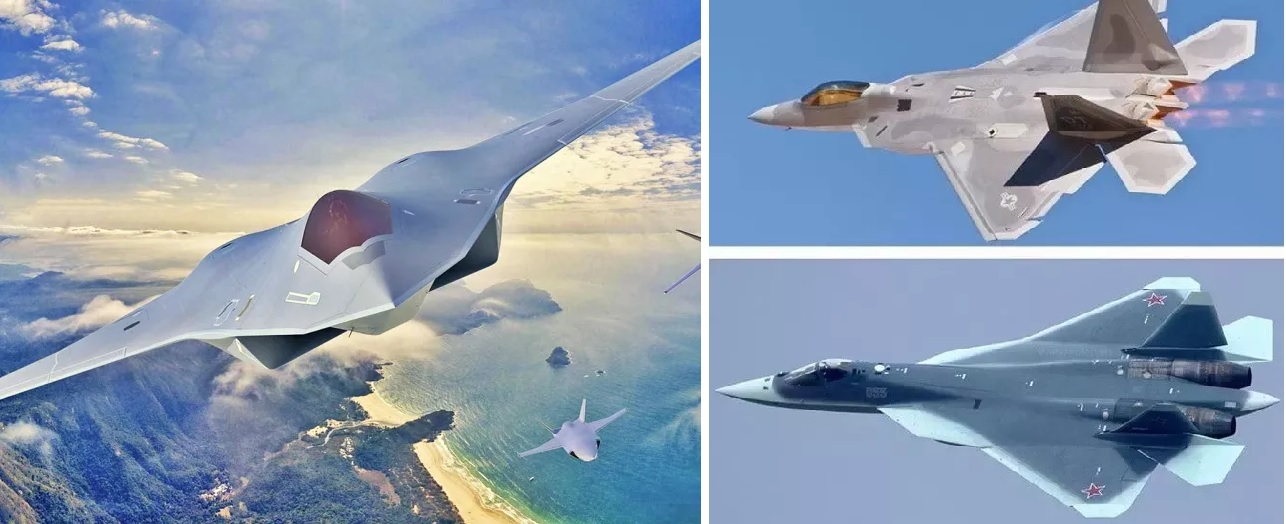 Key Differences Between 5th vs. 6th Generation Fighter Jets
Key Differences Between 5th vs. 6th Generation Fighter Jets
-
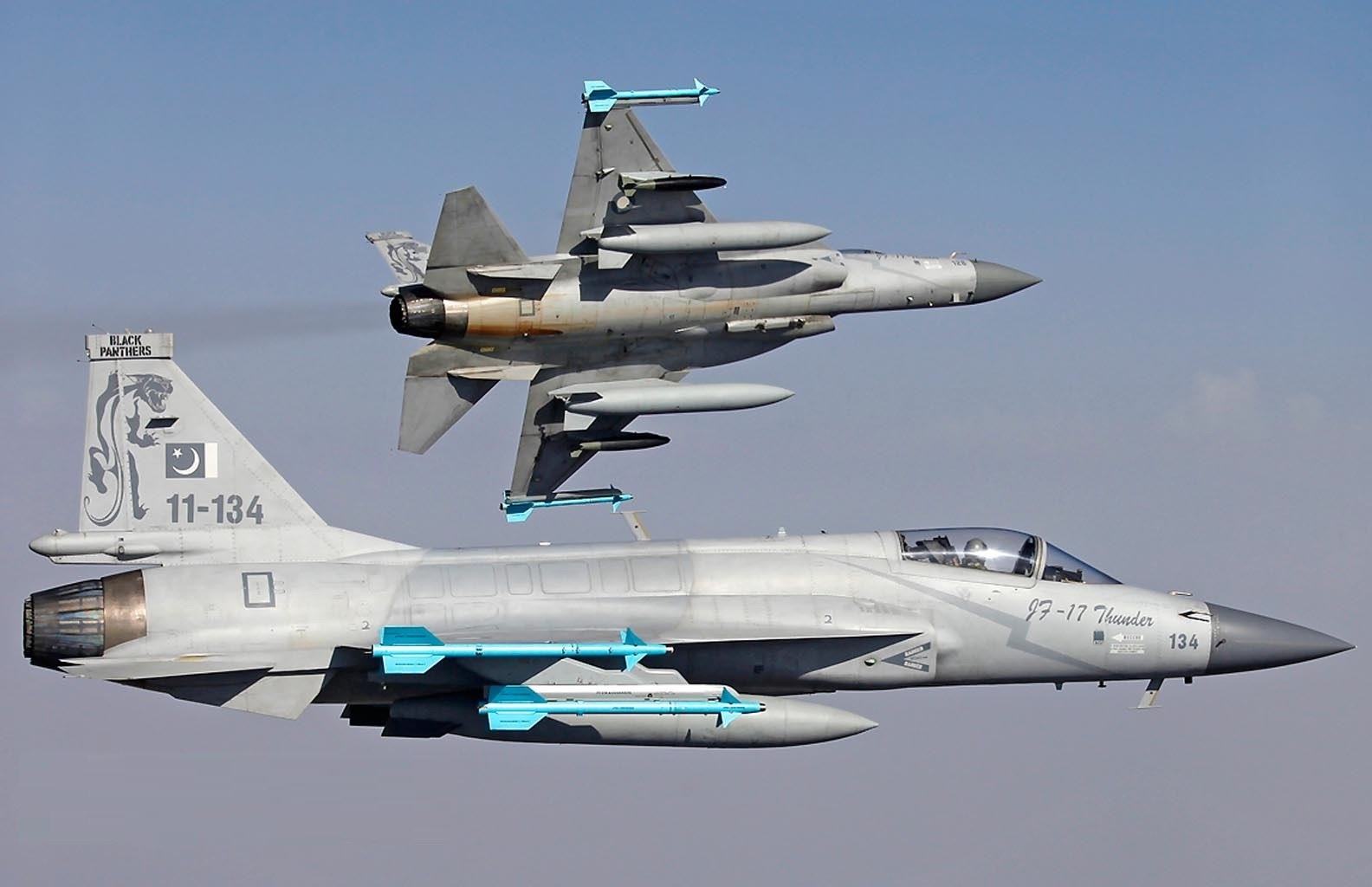 Pakistan Air Force to Unveil Stealth-Enhanced JF-17 Block 4 Fighter Jet by 2028
Pakistan Air Force to Unveil Stealth-Enhanced JF-17 Block 4 Fighter Jet by 2028
-
 Pakistan Announces 15% Increase in Defence Budget for 2024-25 Amid Economic Crisis
Pakistan Announces 15% Increase in Defence Budget for 2024-25 Amid Economic Crisis
-
 India’s AMCA Engine Decision: Safran vs. Rolls-Royce Final Expected by 2025
India’s AMCA Engine Decision: Safran vs. Rolls-Royce Final Expected by 2025
-
 India's TEDBF Program Takes Shape First Flight by 2028: Aiming for Naval Supremacy with Advanced Stealth and Technology
India's TEDBF Program Takes Shape First Flight by 2028: Aiming for Naval Supremacy with Advanced Stealth and Technology
-
 What Would Happen if the USA Left NATO? A Comprehensive Analysis
What Would Happen if the USA Left NATO? A Comprehensive Analysis
Top Trending in 4 Days
-
 Mass Killings in Sudan: Satellite Images Reveal Atrocities as Civil War Turns into Genocide
Mass Killings in Sudan: Satellite Images Reveal Atrocities as Civil War Turns into Genocide
-
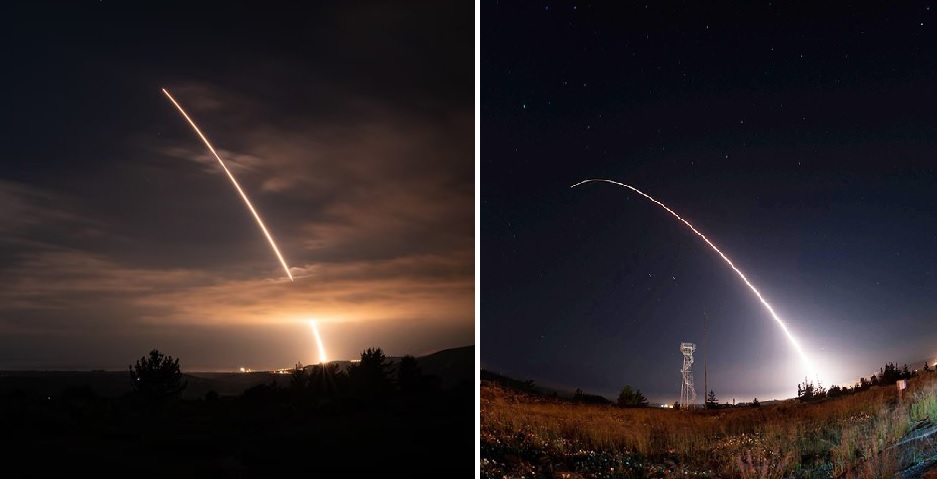 United States Successfully Conducts Unarmed Test Launch of Minuteman III ICBM from California
United States Successfully Conducts Unarmed Test Launch of Minuteman III ICBM from California
-
 China Unveils the World’s First Thorium-Powered Cargo Ship, Carry up to 14,000 Shipping Containers
China Unveils the World’s First Thorium-Powered Cargo Ship, Carry up to 14,000 Shipping Containers
-
 Blogger Claims Il-76 Cargo Plane Shot Down in Sudan Was Recently Purchased from Kyrgyzstan for $12 Million
Blogger Claims Il-76 Cargo Plane Shot Down in Sudan Was Recently Purchased from Kyrgyzstan for $12 Million
-
 China Begins Trial Production at the World’s First Flying Car Smart Factory in Guangzhou
China Begins Trial Production at the World’s First Flying Car Smart Factory in Guangzhou
-
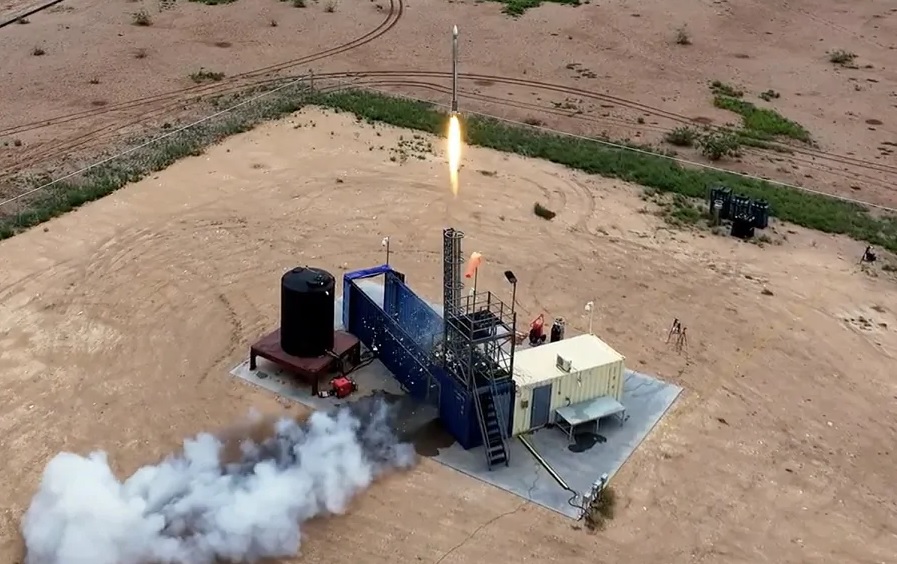 Hanwha Defense USA Invests in Firehawk Aerospace to Accelerate 3D-Printed Rocket Motor Production
Hanwha Defense USA Invests in Firehawk Aerospace to Accelerate 3D-Printed Rocket Motor Production
-
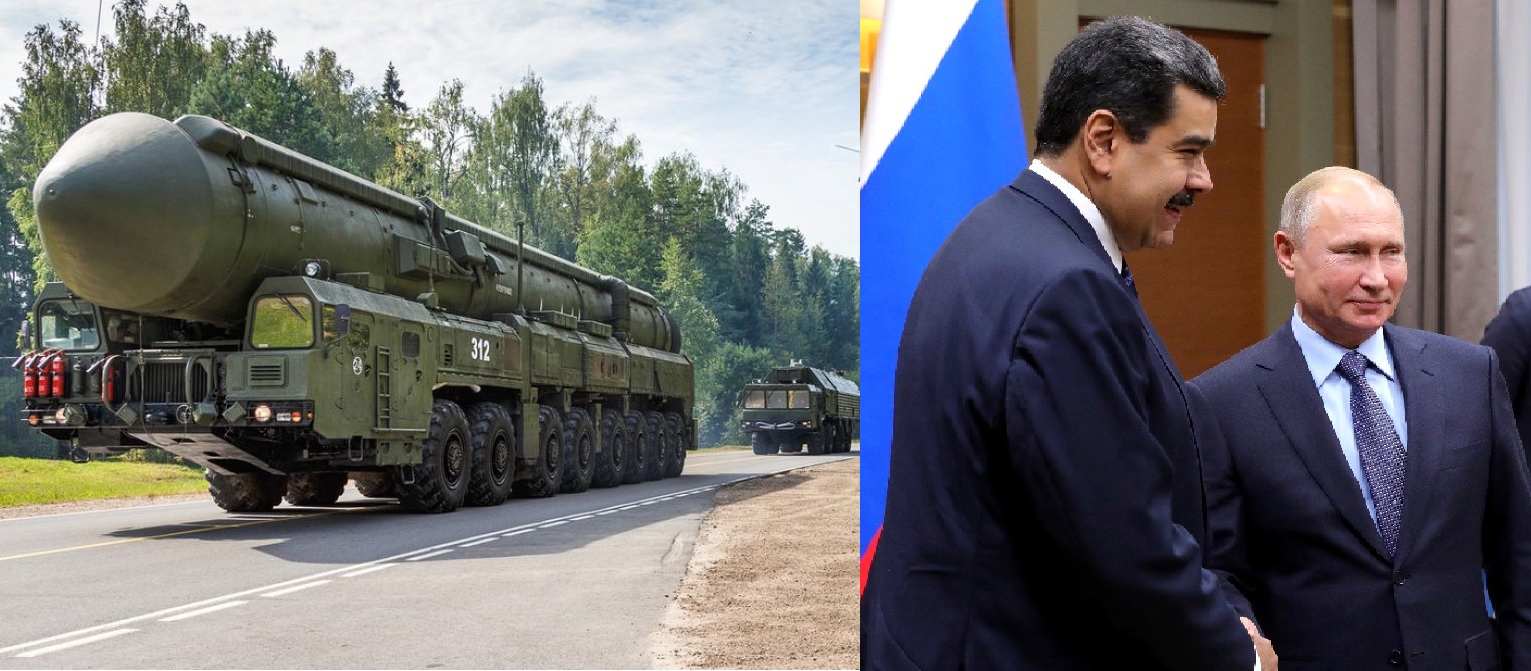 Russia Considers Supplying Venezuela with the “Oreshnik” Missile System — Why It Matters
Russia Considers Supplying Venezuela with the “Oreshnik” Missile System — Why It Matters
-
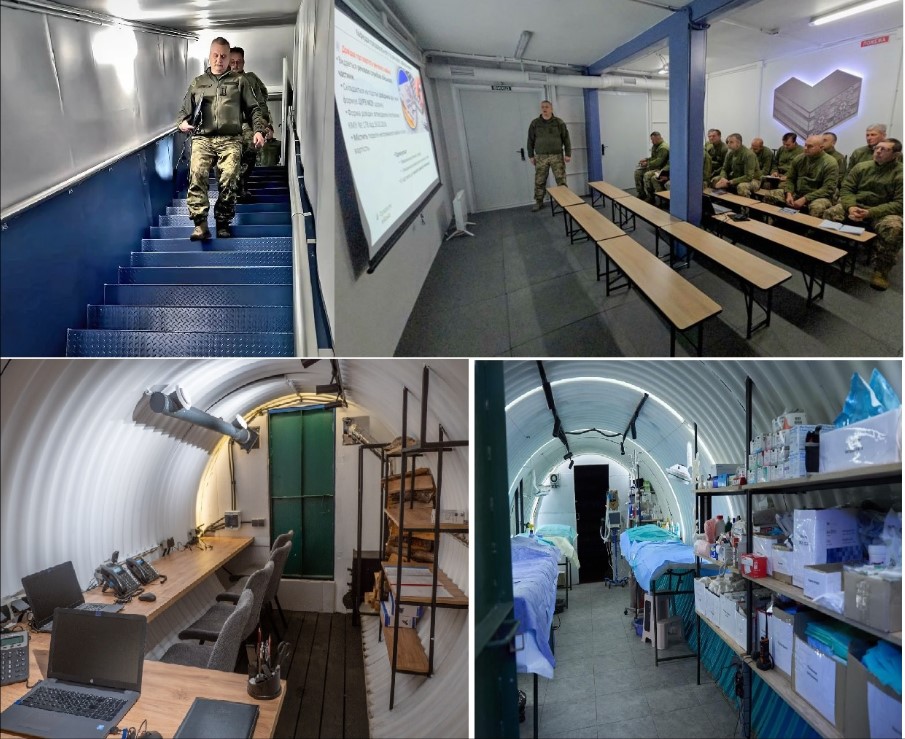 Ukraine Opens First Underground Military Training Hub Built with Metinvest’s Steel Dream Technology
Ukraine Opens First Underground Military Training Hub Built with Metinvest’s Steel Dream Technology
